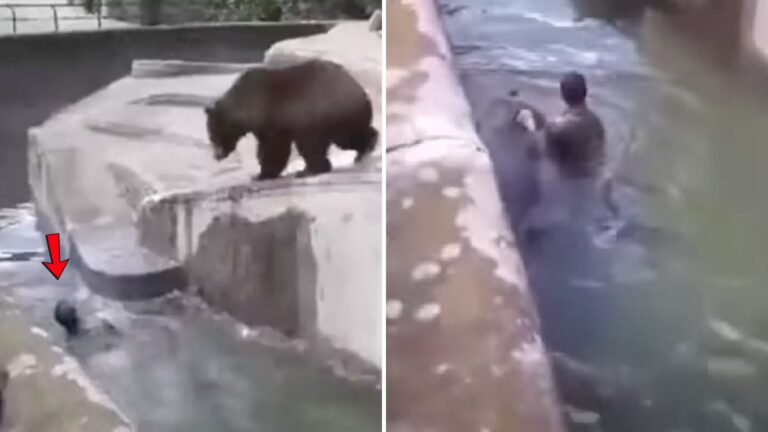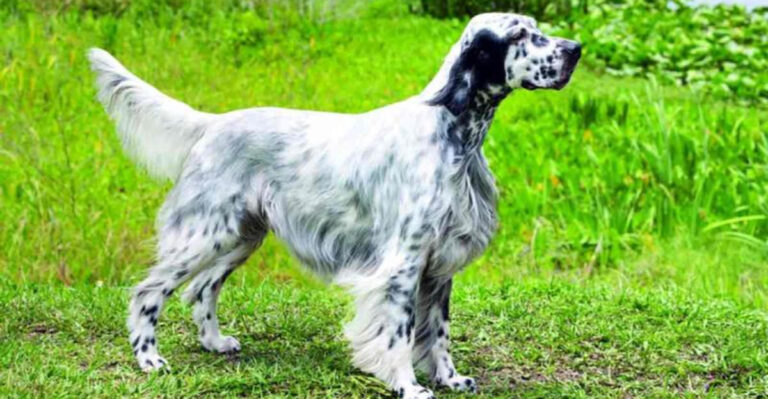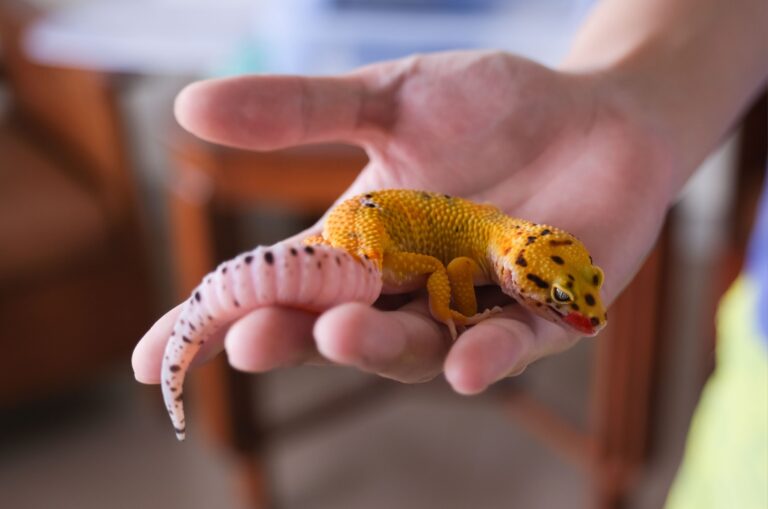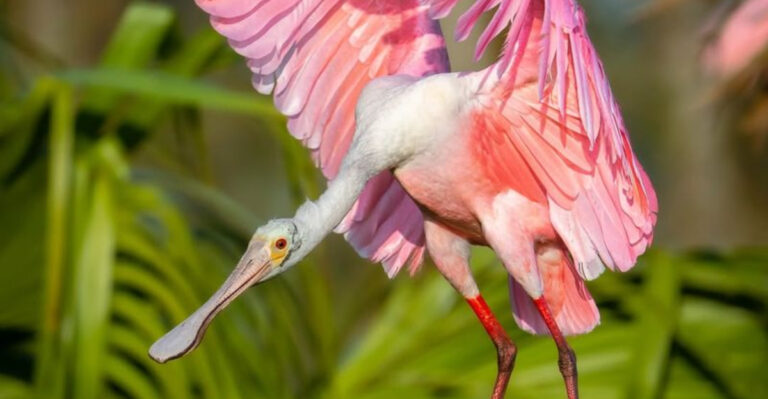These Are The Most Dangerous Animals Ever Spotted In Every State
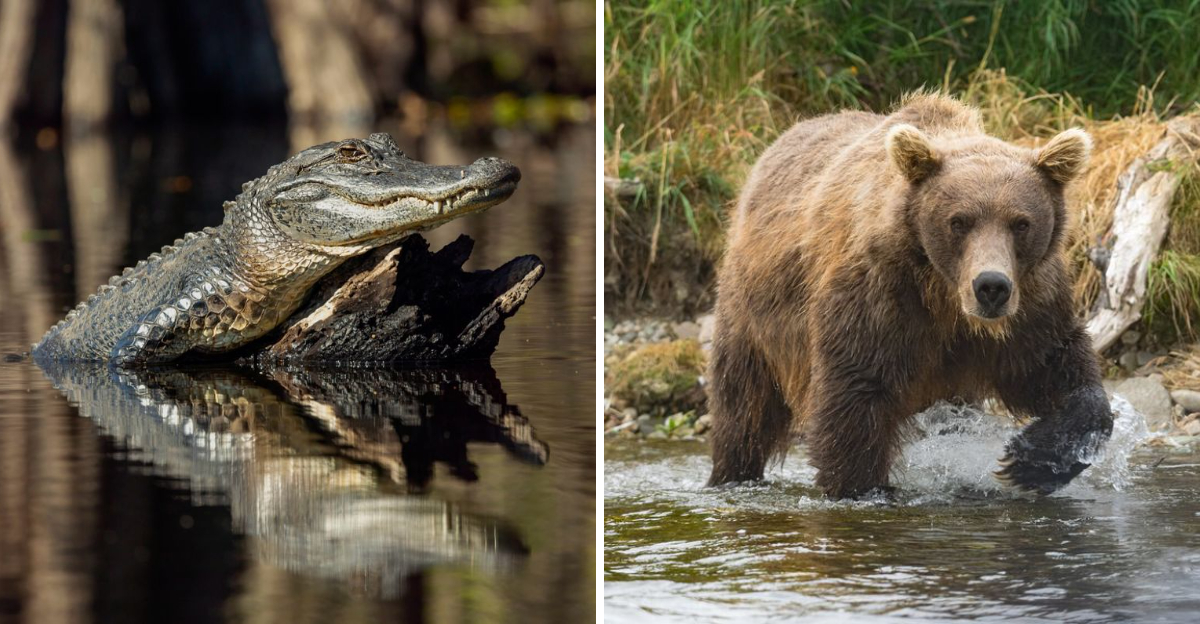
In every corner of the United States, unique and dangerous animals have made their presence known.
These creatures, lurking in diverse landscapes from vast deserts to dense forests, pose threats not just because of their predatory nature but also due to their adaptability and resilience in varied environments.
This compilation highlights one particularly hazardous animal from each state, shedding light on both their intriguing characteristics and the caution they demand from humans.
1. Alabama – Eastern Diamondback Rattlesnake
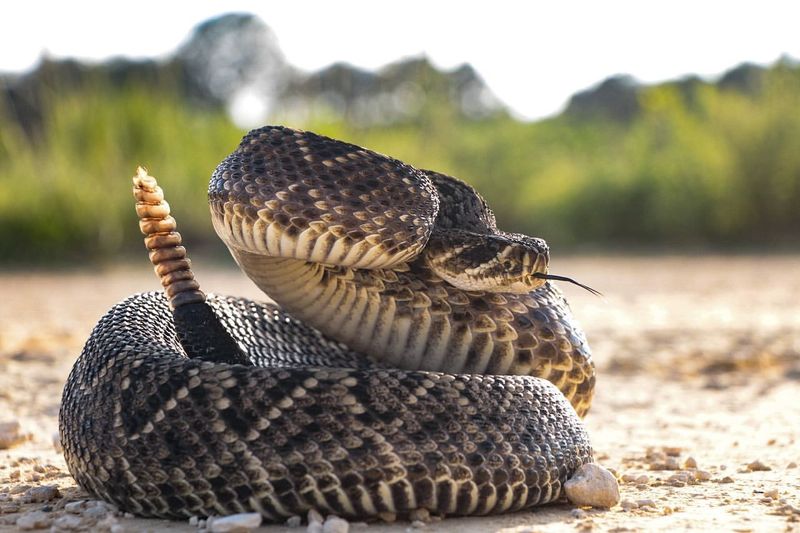
Alabama’s diverse ecosystem provides the ideal habitat for the Eastern Diamondback Rattlesnake, one of the most dangerous reptiles in the United States. Recognizable by its distinctive diamond pattern, this snake can grow quite large, sometimes exceeding five feet in length.
It prefers dry, sandy areas often found in southern Alabama. The rattlesnake’s venom is potent, causing severe symptoms that require immediate medical attention. Despite its deadly nature, this snake is not aggressive and usually avoids human contact.
However, it will defend itself vigorously if threatened. Caution is advised when hiking or exploring areas where this snake might be present. Wearing sturdy boots and remaining vigilant can reduce the risk of encounters.
This fascinating yet dangerous creature is a testament to Alabama’s rich biodiversity, reminding us of the respect and care needed when sharing habitats with such wildlife.
2. Alaska – Grizzly Bear
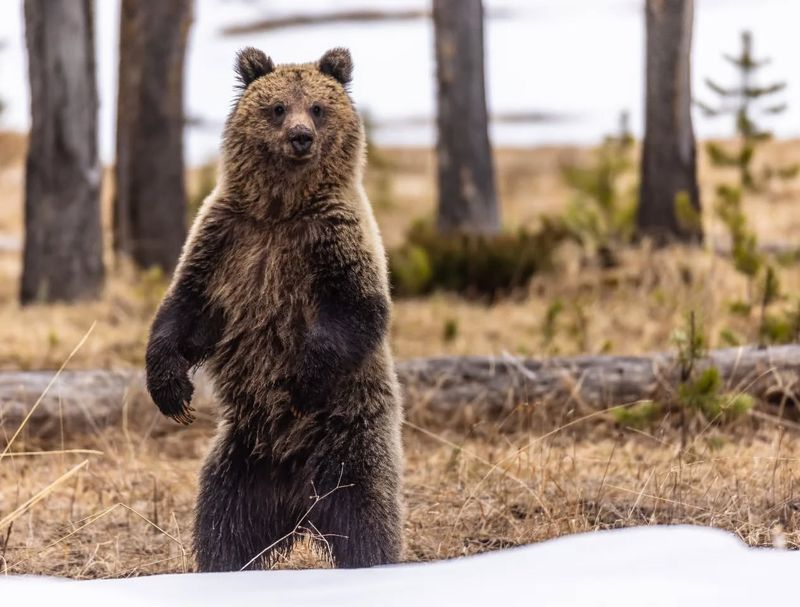
Alaska’s wilderness is synonymous with the majestic Grizzly Bear, an apex predator known for its strength and size. These bears are among the most formidable creatures one can encounter in the wild. Weighing up to 1,500 pounds, they dominate the Alaskan landscape, from dense forests to river valleys.
While generally solitary, Grizzlies can be particularly aggressive when surprised or if their cubs are threatened. Their keen sense of smell and powerful physiques make them adept hunters. Campers and hikers must exercise caution, storing food properly and making noise to avoid startling these bears.
The Grizzly Bear’s presence is both a symbol of nature’s grandeur and a reminder of the need for respectful coexistence. Their role in the ecosystem is vital, and understanding their behavior is crucial for safety in Alaska’s great outdoors.
3. Arizona – Scorpions
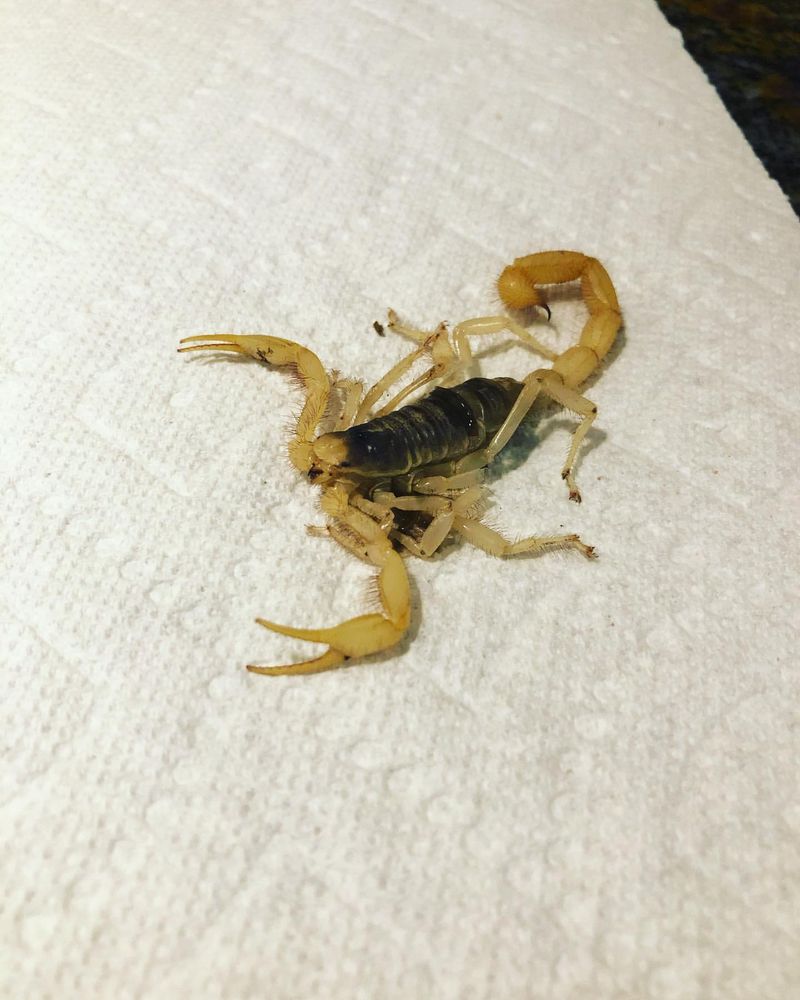
In the arid deserts of Arizona, the scorpion reigns as one of the most perilous creatures, particularly the Arizona Bark Scorpion. This small, elusive scorpion packs a venomous punch, capable of inflicting severe pain and discomfort.
Its translucent body allows it to blend seamlessly into its surroundings, making it difficult to spot. Nocturnal by nature, these scorpions become active under the cover of night, scavenging for prey. The sting from an Arizona Bark Scorpion can cause intense symptoms, requiring medical treatment, especially in children and the elderly.
Residents and visitors alike should take precautionary measures such as using a black light to detect scorpions around homes and campsites.
4. Arkansas – Wild Boars
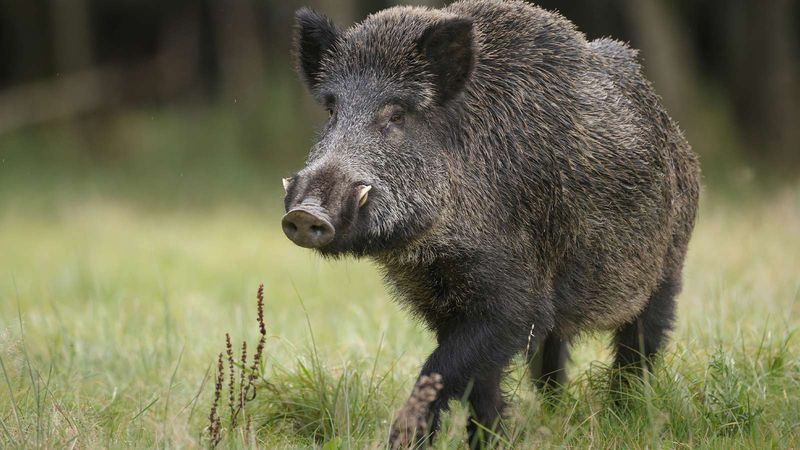
Arkansas’s woodlands and fields are occasionally disrupted by the presence of Wild Boars, a species known for their unpredictable nature and potential for aggression. These animals, characterized by their muscular builds and sharp tusks, can weigh over 200 pounds.
Wild Boars are opportunistic feeders, which means they can cause extensive damage to agriculture and natural vegetation. Their tendency to charge when threatened makes them particularly dangerous, demanding caution from those who encounter them in the wild.
Understanding their behavior and keeping a safe distance is crucial when navigating areas where Wild Boars are known to roam.
5. California – Great White Sharks
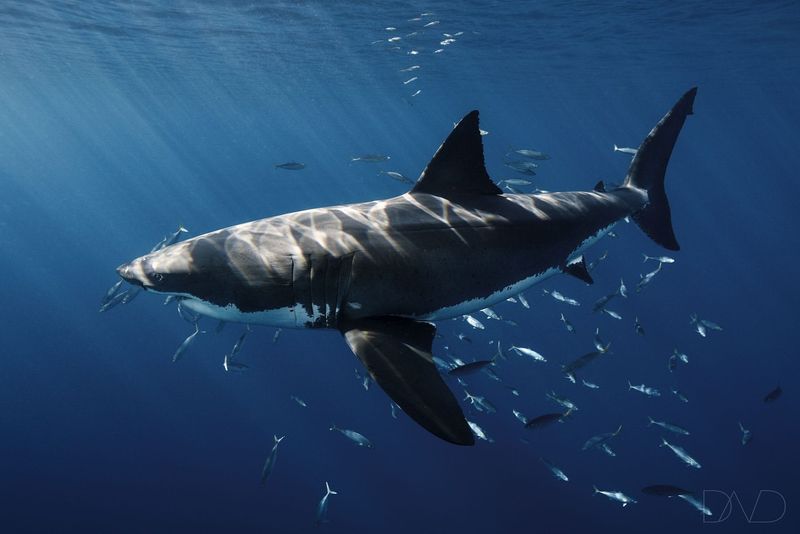
The coastal waters of California are home to the legendary Great White Shark, a species often associated with both awe and fear. Known for their size and power, these sharks can grow up to 20 feet in length and are apex predators of the ocean.
Great Whites are frequent visitors along California’s coastline, particularly near seal colonies. While attacks on humans are rare, their presence is a reminder of the ocean’s untamed nature. Swimmers and surfers are advised to stay vigilant, avoid wearing shiny jewelry, and steer clear of areas where seals congregate.
The Great White Shark is a magnificent creature, emblematic of the ocean’s mysteries and dangers. Respecting their habitat is essential for ensuring safety and appreciating the balance of marine ecosystems.
6. Colorado – Mountain Lions
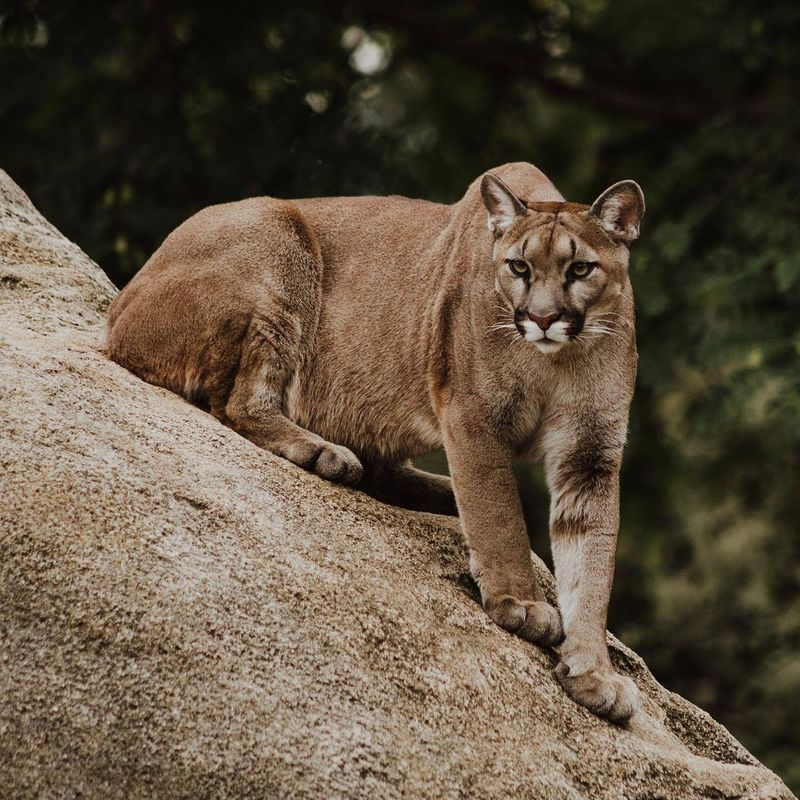
Colorado’s rugged terrain is prowled by the elusive Mountain Lion, a predator that commands both respect and caution. Known for their stealth and power, these big cats are capable hunters, often striking with speed and precision.
They occupy vast territories in Colorado’s mountainous regions, where they prey on deer and other wildlife. While attacks on humans are uncommon, encounters can occur, especially in areas where development encroaches on their habitat.
Hikers and outdoor enthusiasts must remain alert, travel in groups, and avoid hiking at dawn or dusk when these predators are most active. Mountain Lions are a vital part of Colorado’s ecosystems, and understanding their presence is key to coexisting safely in these striking landscapes.
7. Connecticut – Black Bears
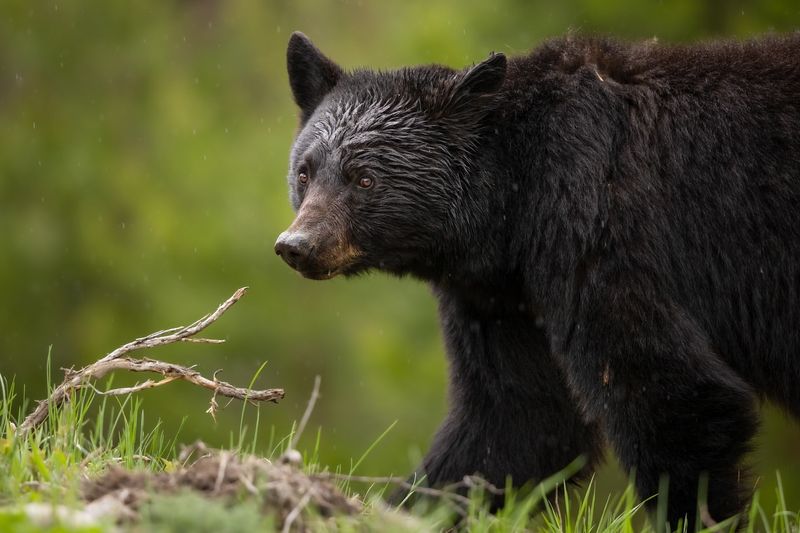
Connecticut’s forests and suburban areas have seen a rise in Black Bear sightings, highlighting the need for awareness and caution. These bears, while generally non-aggressive, are powerful animals capable of causing harm if provoked.
Black Bears are known for their curiosity, often leading them to rummage through garbage or approach homes in search of food. Residents are encouraged to secure trash and remove bird feeders to minimize encounters. Understanding bear behavior and respecting their space is crucial in ensuring safety.
8. Delaware – Coyotes
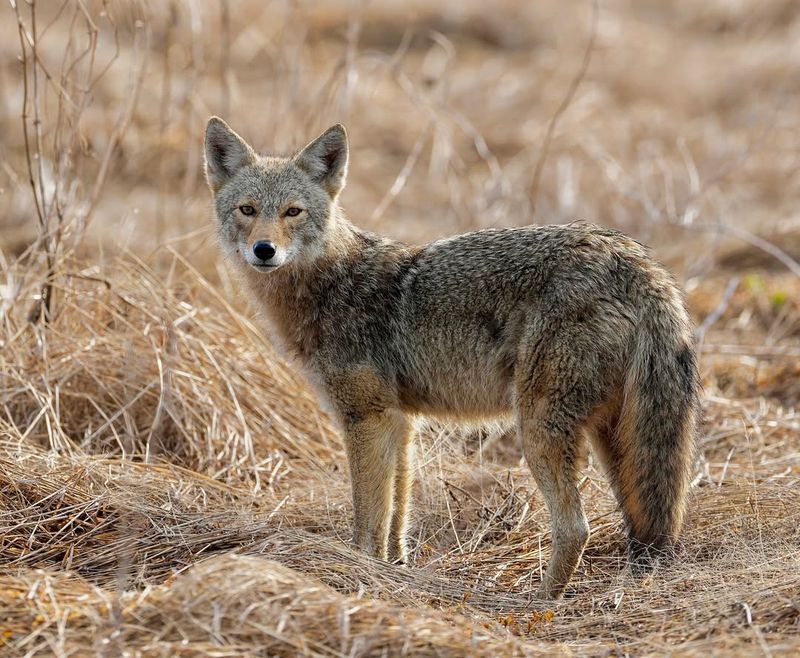
Delaware’s open fields and suburban edges have become the hunting grounds for the cunning Coyote, an adaptable predator known for its intelligence and resilience. These animals have expanded their range significantly, often living in close proximity to human populations.
Coyotes pose a minimal direct threat to humans but can be dangerous to pets and livestock. Their nocturnal hunting habits and distinctive howls often signal their presence. Understanding their patterns and securing pets is vital for minimizing conflicts.
The Coyote’s adaptability highlights the need for awareness and respect for wildlife boundaries. As they continue to thrive in Delaware, coexistence requires vigilance and proactive measures from the community.
9. Florida – Alligators
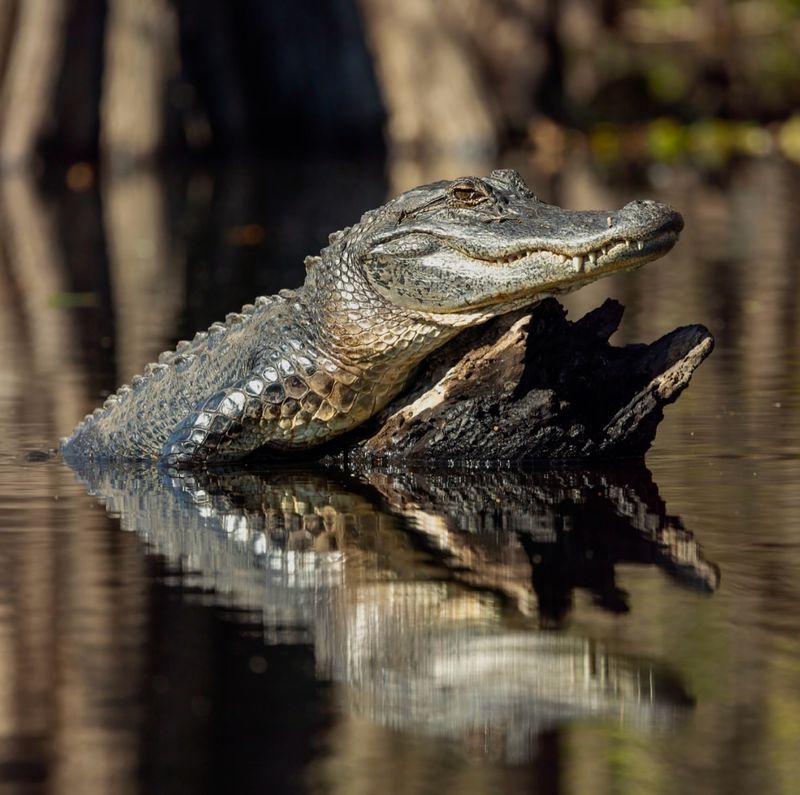
In Florida, the presence of Alligators is a well-known aspect of life, reflecting the state’s unique ecosystem. These formidable reptiles are found in rivers, lakes, and swamps, where they reign as top predators. Alligators can grow to impressive sizes, with some reaching over 13 feet in length.
Their powerful jaws and stealthy nature make them formidable hunters. While attacks on humans are rare, they can occur, particularly when humans encroach upon their territory or during the mating season.
Residents and visitors are advised to maintain a safe distance from waters inhabited by Alligators, never feed them, and heed local advisories. These practices ensure both human safety and the preservation of Florida’s biodiverse wetlands.
10. Georgia – Copperhead Snakes
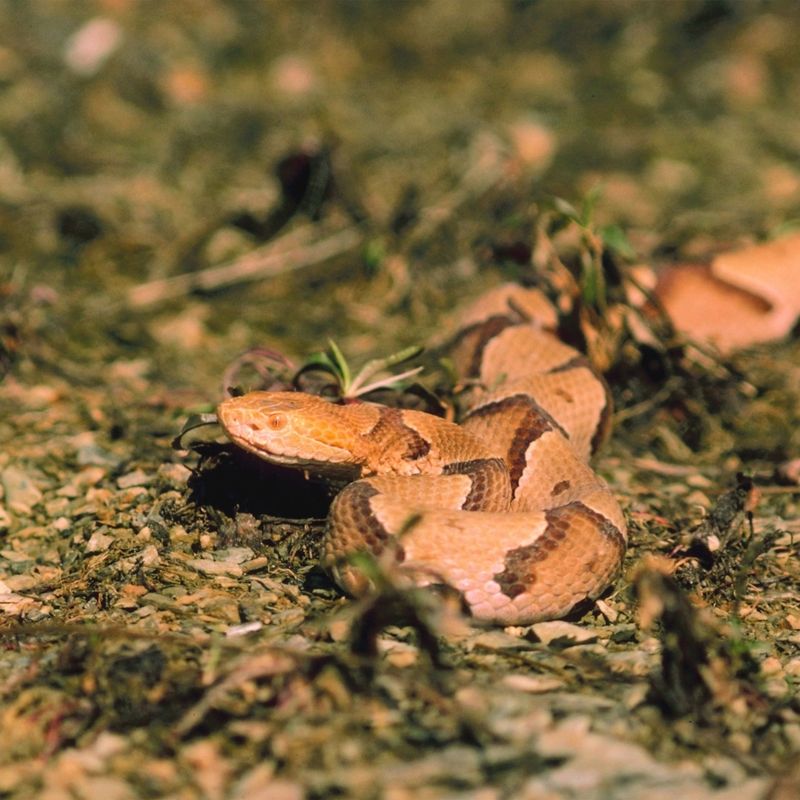
In the diverse landscapes of Georgia, the Copperhead Snake is often encountered, notable for its potent venom and distinctive coloring. This snake, while not the most dangerous of Georgia’s reptiles, is responsible for the majority of snake bites in the region.
Copperheads are masters of camouflage, often going unnoticed in their natural habitat of forests and rocky areas. Their bites, though rarely fatal, can cause significant pain and medical issues, making prompt treatment essential.
Residents are encouraged to wear protective footwear and remain vigilant when exploring areas where Copperheads reside. Their presence serves as a reminder of nature’s hidden hazards and the importance of respecting wildlife in its natural setting.
11. Hawaii – Box Jellyfish
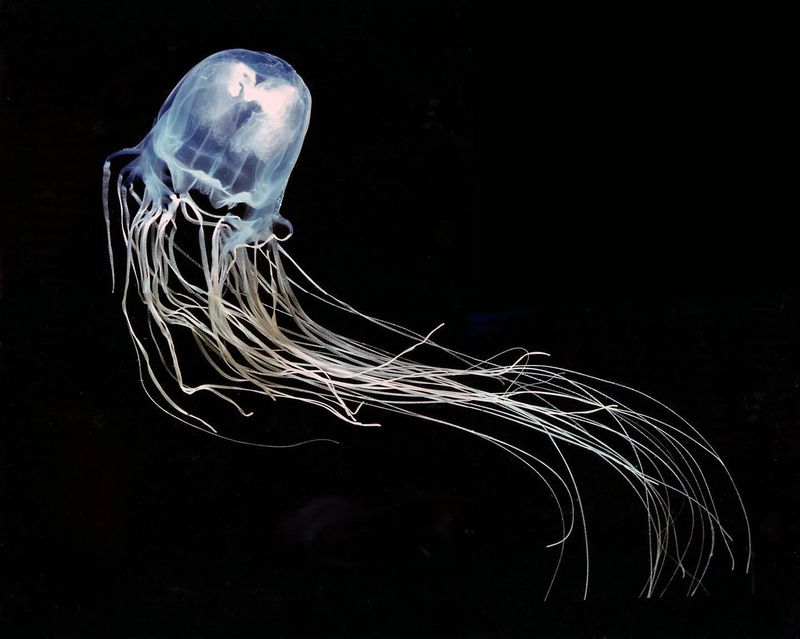
Hawaii’s beautiful beaches, while alluring, harbor the dangerous Box Jellyfish, a creature known for its painful and sometimes life-threatening sting. These jellyfish appear in Hawaiian waters periodically, often after full moon phases.
Their nearly invisible bodies and long tentacles make them difficult to spot, posing a hidden danger to swimmers. The sting from a Box Jellyfish can cause severe pain, stinging sensations, and even cardiac issues in vulnerable individuals.
Beachgoers should heed posted warnings and be cautious during jellyfish seasons. Awareness and preparation are key to enjoying Hawaii’s waters safely, ensuring that the only lasting memories are of the island’s beauty, not its hazards.
12. Idaho – Wolves
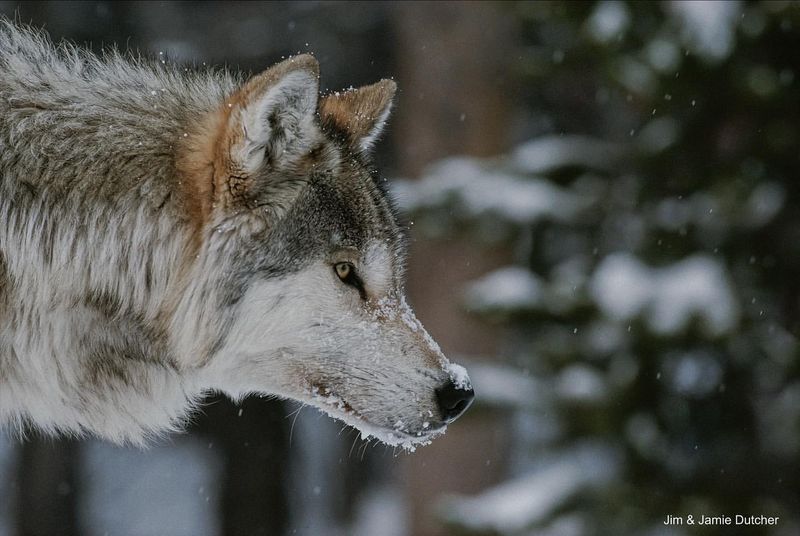
Idaho’s expansive wilderness is home to the Gray Wolf, an iconic species that plays a crucial role in the ecosystem. Wolves are known for their intelligence, social structure, and hunting prowess, often working in packs to take down prey.
While generally avoiding humans, wolves can pose a threat to livestock, leading to conflicts with local farmers and ranchers. Understanding their behavior and implementing preventive measures are essential for coexistence.
The presence of wolves in Idaho highlights the state’s rich natural heritage and the importance of balancing wildlife conservation with human activities.
13. Illinois – Brown Recluse Spider
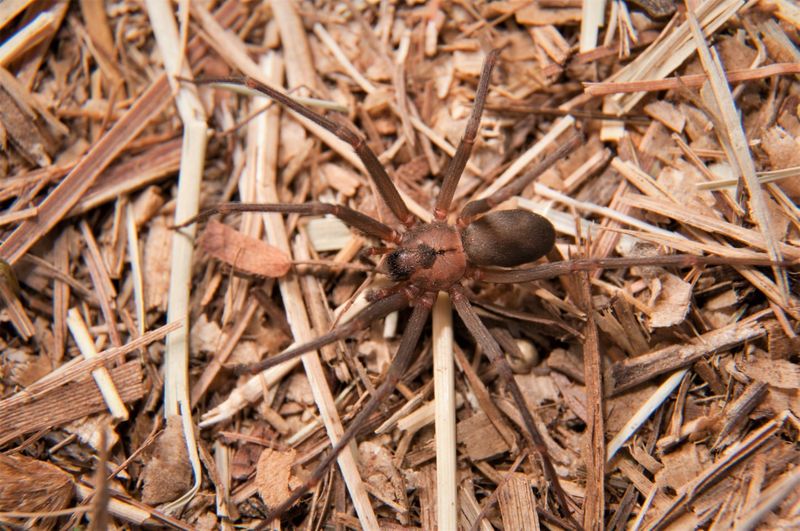
In the state of Illinois, the Brown Recluse Spider, although small, poses significant danger due to its venomous bite. Known for its reclusive nature, this spider often hides in dark, undisturbed areas of homes and buildings.
The bite of a Brown Recluse can cause serious tissue damage, leading to medical complications if not treated promptly. Despite their reputation, these spiders are not aggressive and usually bite only when disturbed.
Homeowners should be vigilant in keeping homes clean and free from clutter to minimize hiding spots. Awareness and prompt medical attention are crucial in managing encounters with this stealthy arachnid.
14. Indiana – Timber Rattlesnakes
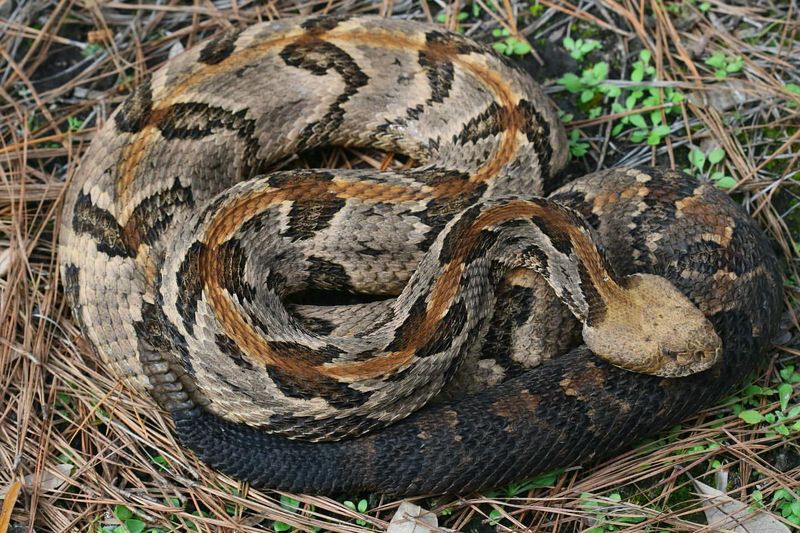
Indiana’s natural landscapes are occasionally home to the Timber Rattlesnake, a species known for its potent venom and distinctive rattle. These snakes inhabit forests and rocky areas, where they blend seamlessly with their surroundings.
Timber Rattlesnakes are generally shy, opting to retreat when confronted. However, they will defend themselves if threatened, and their bites require immediate medical attention. Caution and respect for their space are essential when venturing into their habitats.
15. Iowa – Red Foxes
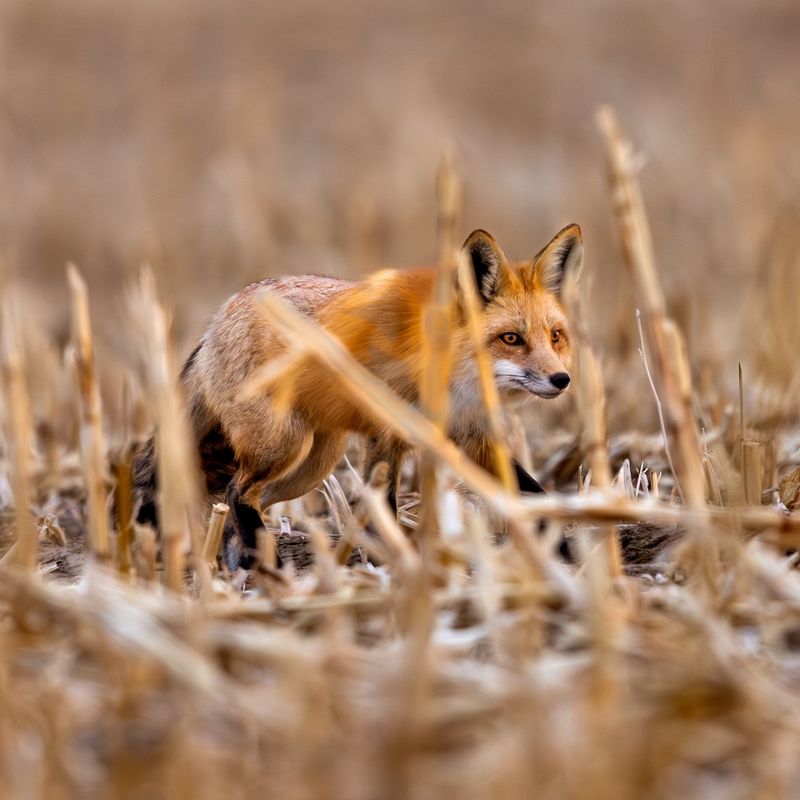
Iowa’s fields and forests are roaming grounds for the Red Fox, a cunning predator known for its agility and adaptability. These foxes, with their striking red fur and bushy tails, are often seen as symbols of the wild.
While Red Foxes pose little direct threat to humans, they can become a nuisance to farmers by preying on small livestock and poultry. Their presence in urban areas can also lead to encounters with pets. Understanding their behavior and securing potential food sources is key to minimizing conflicts.
The Red Fox’s adaptability to various environments highlights the need for awareness and respect for wildlife, fostering a harmonious coexistence with these fascinating creatures.
16. Kansas – Prairie Rattlesnake
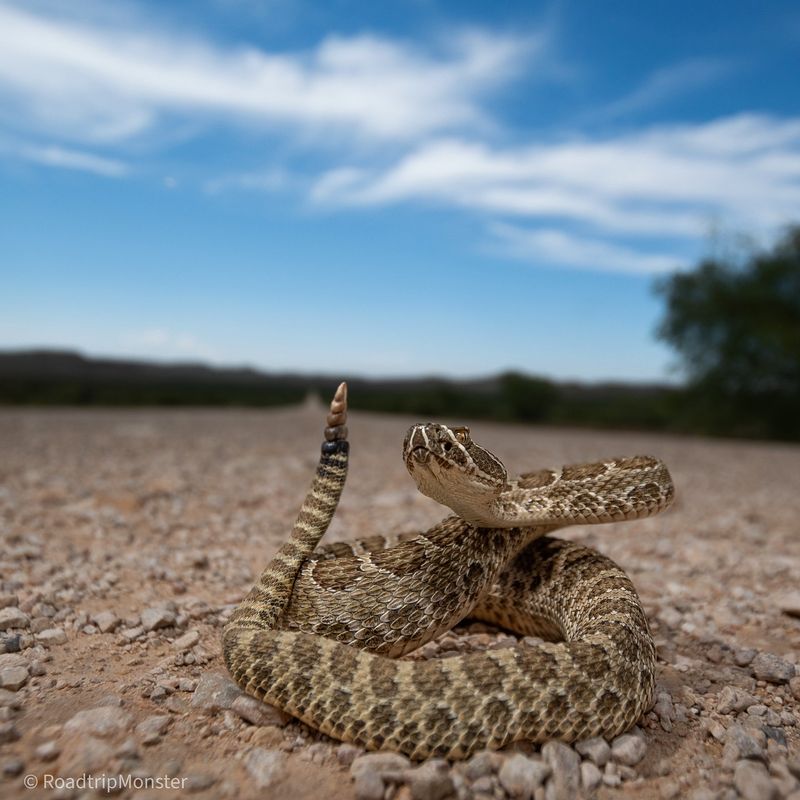
Kansas’s prairies and grasslands are occasionally traversed by the Prairie Rattlesnake, a species known for its potent venom and distinctive rattle. These snakes prefer open, grassy areas where they can hunt for small rodents and bask in the sun.
Prairie Rattlesnakes are generally non-aggressive, choosing to retreat rather than confront. However, when threatened, they can deliver a dangerous bite that requires immediate medical attention. Precaution and awareness are essential when exploring their habitats.
17. Kentucky – Black Widow Spider
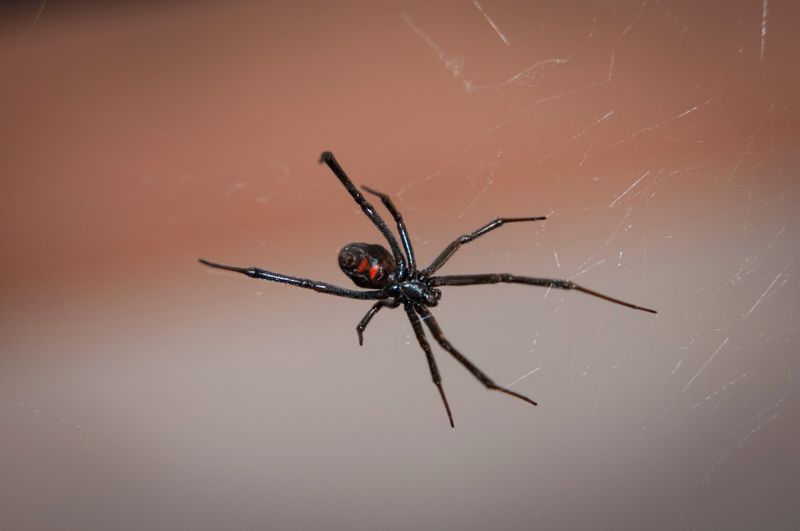
In Kentucky, the Black Widow Spider is a creature that commands caution due to its venomous bite and iconic appearance. Known for the red hourglass marking on its abdomen, this spider often resides in dark, undisturbed areas like barns and sheds.
The bite of a Black Widow can cause severe symptoms, including muscle pain and cramping, requiring medical attention. Despite their fearsome reputation, these spiders are not aggressive and bite only when threatened.
Homeowners should exercise caution and keep areas clean and uncluttered to reduce potential hiding spots. Awareness and respect for these spiders are essential for safe coexistence in Kentucky’s rural and suburban settings.
18. Louisiana – Cottonmouth Snakes
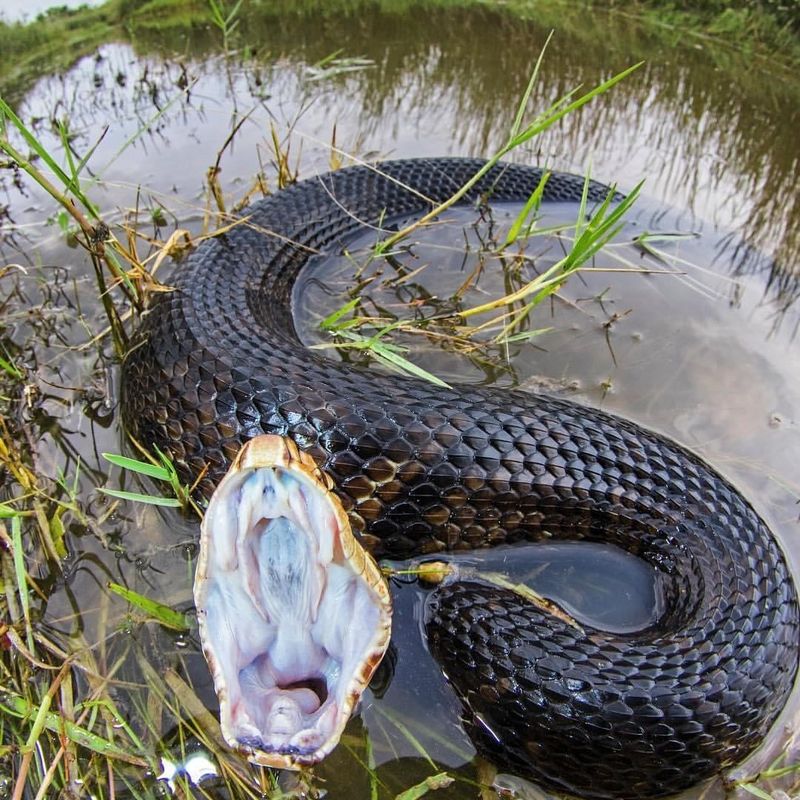
Louisiana’s swamps and wetlands are home to the Cottonmouth Snake, also known as the Water Moccasin, a species known for its aggressive nature and potent venom. These snakes are often found near water bodies, making them a common sight in Louisiana’s unique ecosystems.
Cottonmouths are distinctive for their thick bodies and the unique white coloration inside their mouths, which they display when threatened. Their bites can be dangerous, necessitating prompt medical treatment.
Caution is advised when navigating areas where these snakes are prevalent. Understanding and respecting the presence of Cottonmouths in Louisiana highlights the importance of awareness and safety in the state’s diverse natural habitats.
19. Maine – Moose
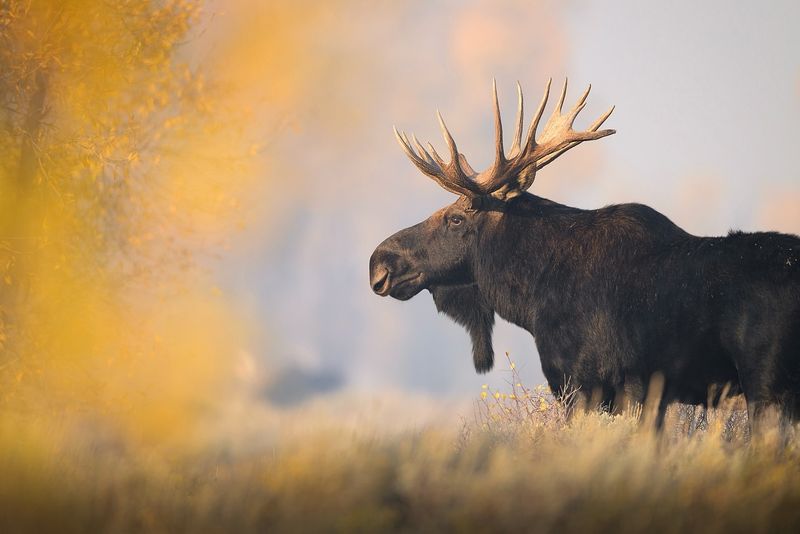
Maine’s vast forests are home to the majestic Moose, the largest member of the deer family, known for its imposing size and striking antlers. While generally not aggressive, moose can become dangerous if provoked or during mating season when their behavior becomes unpredictable.
Encounters often occur on roads, particularly during dawn and dusk when moose are most active. Drivers are advised to be vigilant and reduce speed in areas known for moose crossings. Their sheer size makes collisions extremely hazardous.
The presence of moose in Maine is a testament to the state’s rich wildlife heritage, emphasizing the need for respectful coexistence and understanding of these magnificent animals.
20. Maryland – Eastern Copperhead
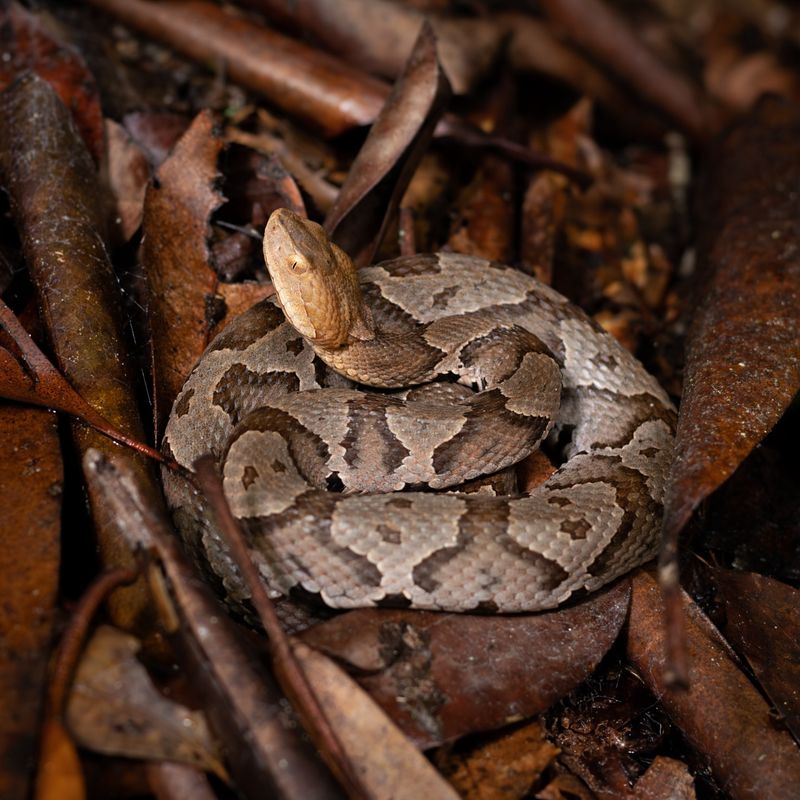
Maryland’s diverse habitats are occasionally inhabited by the Eastern Copperhead, a snake known for its potent venom and distinctive copper-colored scales. These snakes prefer wooded areas and rocky terrains where they can remain camouflaged.
Eastern Copperheads are generally non-aggressive, opting to remain still when threatened. However, their bites can cause significant pain and require prompt medical attention.
Understanding the presence of Eastern Copperheads in Maryland underscores the importance of awareness and respect for wildlife, promoting safe coexistence in natural environments.
21. Massachusetts – Great White Sharks
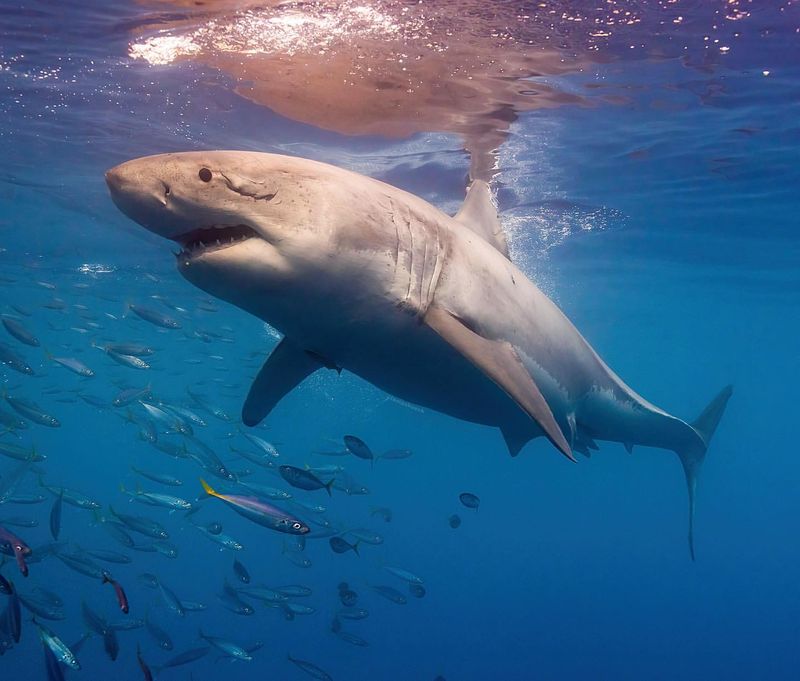
The coastal waters of Massachusetts are home to the formidable Great White Shark, a species known for its size and power. These sharks are apex predators, often found near seal colonies along the Massachusetts coast.
While attacks on humans are rare, the presence of Great Whites is a reminder of the ocean’s wild nature. Swimmers and surfers are advised to stay vigilant, avoid wearing shiny objects, and steer clear of areas with heavy seal populations.
The Great White Shark is a symbol of marine majesty and danger, emphasizing the need for respect and awareness while enjoying the ocean’s depths.
22. Michigan – Black Bears
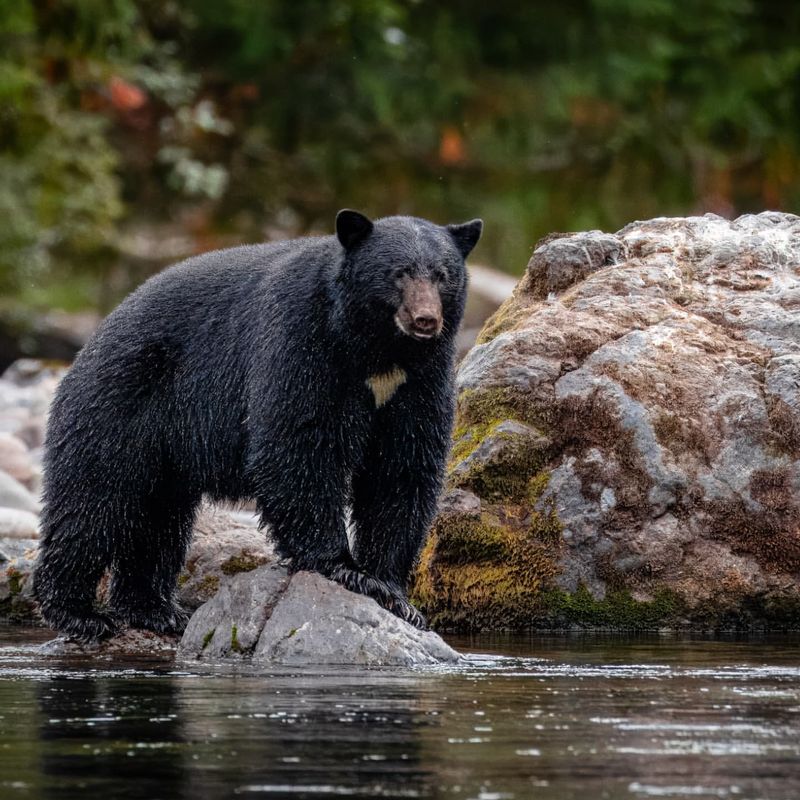
Michigan’s expansive wilderness is home to the Black Bear, a species known for its curiosity and adaptability. These bears, while generally non-aggressive, can become dangerous if they feel threatened or are in search of food.
Black Bears are often drawn to human settlements by the smell of unsecured garbage or food. Residents are encouraged to manage waste responsibly and use bear-proof containers to minimize interactions. Understanding bear behavior and maintaining a respectful distance is crucial in promoting cohabitation.
23. Minnesota – Timber Wolves
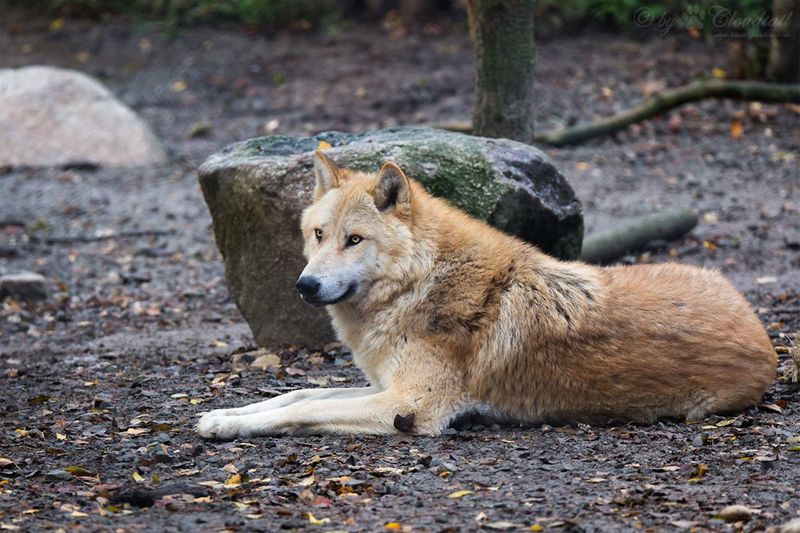
Minnesota’s vast forests and snowy landscapes are the domain of the Timber Wolves, a species known for their intelligence and pack dynamics. Wolves play a crucial role in maintaining ecological balance by controlling prey populations.
While wolves generally avoid humans, they can pose a threat to livestock, leading to conflicts with local farmers.
The presence of Timber Wolves in Minnesota underscores the importance of wildlife conservation and the need for harmonious living alongside these majestic creatures.
24. Mississippi – Black Widow Spiders
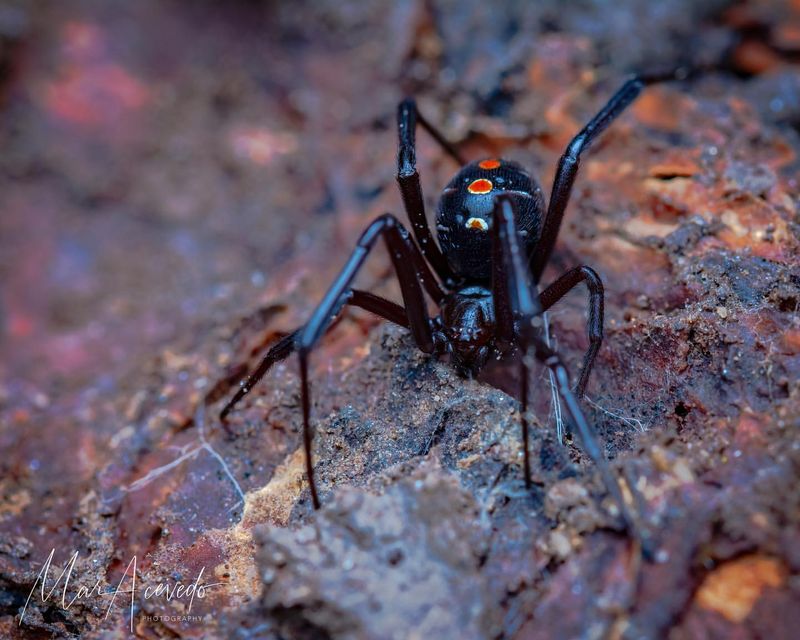
In Mississippi, the Black Widow Spider is a notable presence due to its venomous bite and distinctive appearance. Known for the red hourglass marking on its abdomen, this spider often resides in secluded, dark areas.
Although the bite of a Black Widow can cause severe symptoms, it is rarely fatal with prompt medical treatment. These spiders are not aggressive and typically bite only when disturbed.
Ensuring homes are clean and free from clutter can help minimize the risk of encounters. Awareness and precaution are vital in coexisting safely with these fascinating yet potentially dangerous creatures.
25. Missouri – American Black Bear
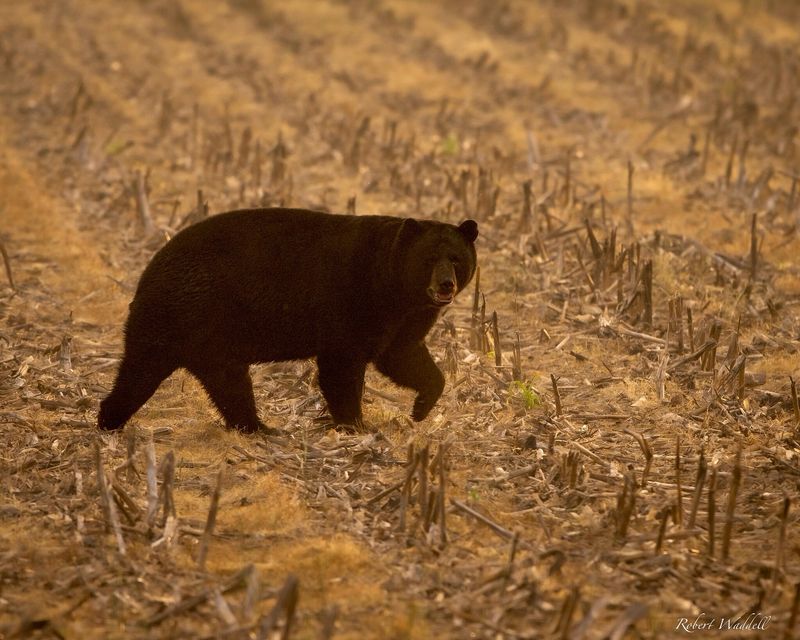
Missouri’s lush forests provide a habitat for the American Black Bear, an animal that, while not usually aggressive, requires respect and caution. These bears are curious creatures, often venturing into human areas in search of food.
Bears’ interest in garbage and outdoor food sources can lead to unwanted encounters. Residents are encouraged to secure trash and use bear-resistant containers to reduce the likelihood of interactions.
The presence of American Black Bears in Missouri reflects the need for responsible wildlife management and awareness.
26. Montana – Grizzly Bears
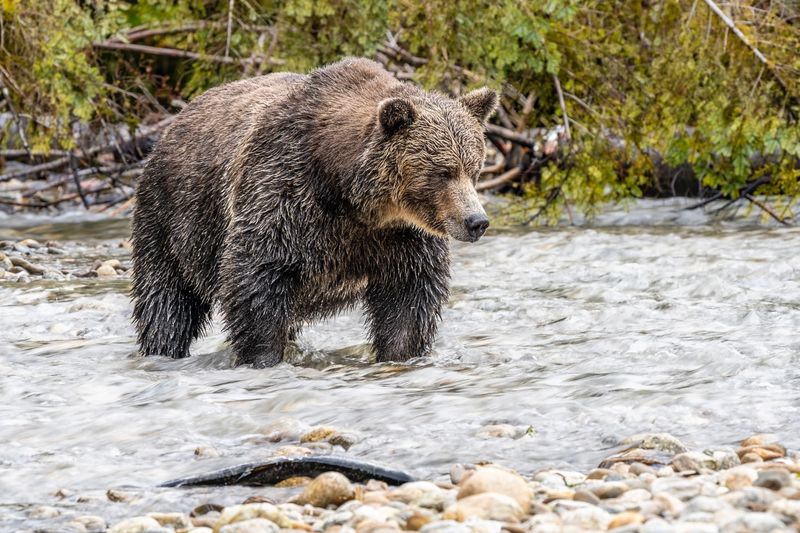
Montana’s vast wilderness is home to the formidable Grizzly Bear, an emblematic species known for its size and strength. These bears are apex predators, inhabiting the forests and mountains of the region. Grizzlies can be particularly aggressive if surprised or if their young are threatened.
Visitors to Montana’s wilderness areas should exercise caution, making noise to avoid startling bears and storing food securely.
The presence of Grizzly Bears in Montana is a testament to the state’s wild beauty and the importance of respectful coexistence. Their role in the ecosystem is vital, and understanding their behavior is crucial for safety and conservation.
27. Nebraska – Coyotes
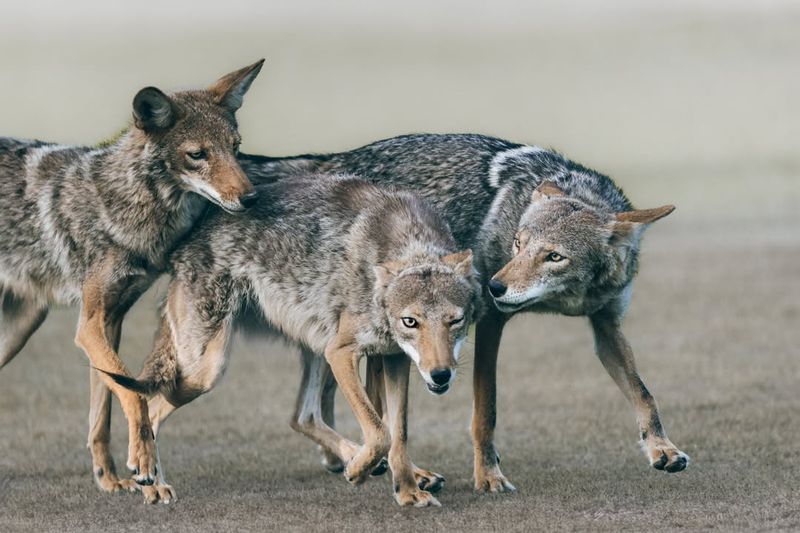
Nebraska’s wide-open plains are frequented by the cunning Coyote, a species known for its adaptability and intelligence. Coyotes are often found near human settlements, where they scavenge for food and hunt small animals.
While generally not a direct threat to humans, Coyotes can pose dangers to pets and livestock. Understanding their behavior and securing potential food sources are vital for minimizing conflicts.
28. Nevada – Mojave Rattlesnake
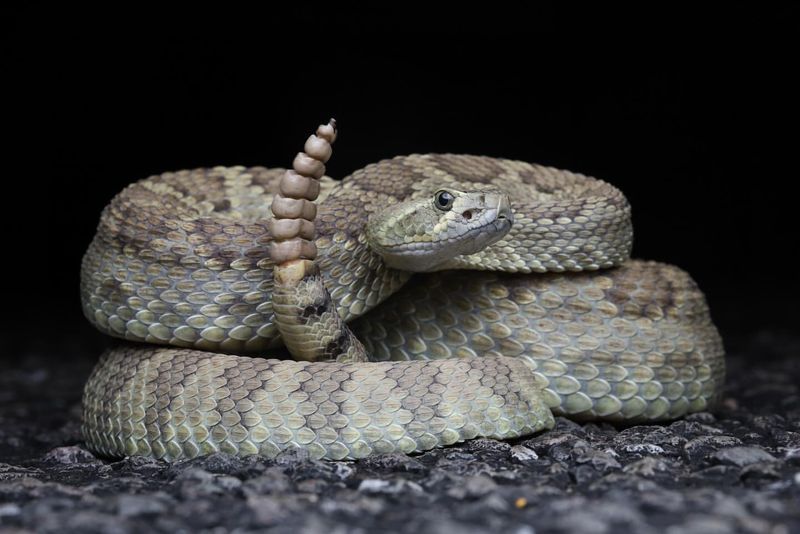
Nevada’s arid deserts are home to the Mojave Rattlesnake, a species notorious for its potent venom and distinctive rattle. These snakes inhabit deserts, scrublands, and rocky areas where they hunt for rodents.
The Mojave Rattlesnake’s venom is particularly dangerous, containing neurotoxins that require immediate medical attention if bitten. Despite their fearsome reputation, these snakes are generally non-aggressive and prefer to avoid humans.
Awareness and caution are crucial when exploring Nevada’s wild landscapes. Understanding the presence of Mojave Rattlesnakes highlights the need for respect and safety in these harsh but beautiful environments.
29. New Hampshire – Black Bears
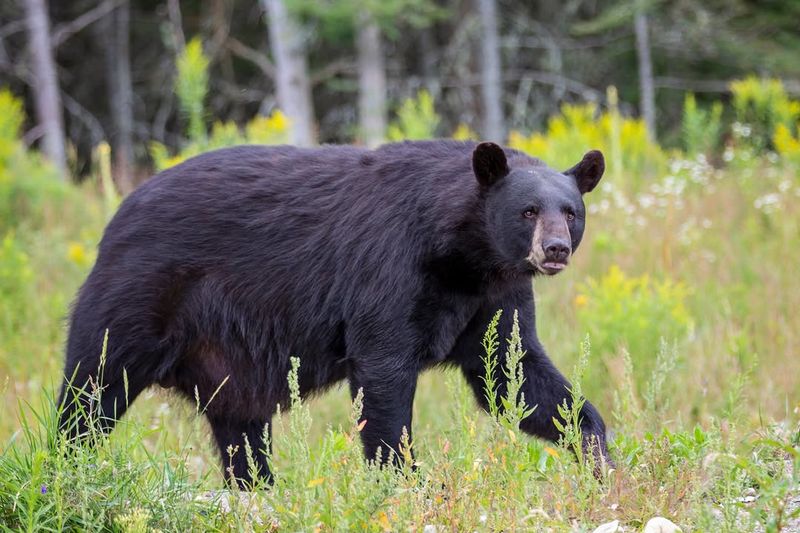
New Hampshire’s forests are home to the Black Bear, a species known for its intelligence and adaptability. These bears are generally solitary, roaming vast territories in search of food.
While not typically aggressive, Black Bears can become dangerous if they feel threatened or if they are drawn to human settlements by the smell of food. Securing trash and using bear-proof containers can help reduce unwanted encounters.
The presence of Black Bears in New Hampshire highlights the need for respectful coexistence and the importance of understanding wildlife behavior to ensure safety and harmony in natural environments.
30. New Jersey – Timber Rattlesnakes
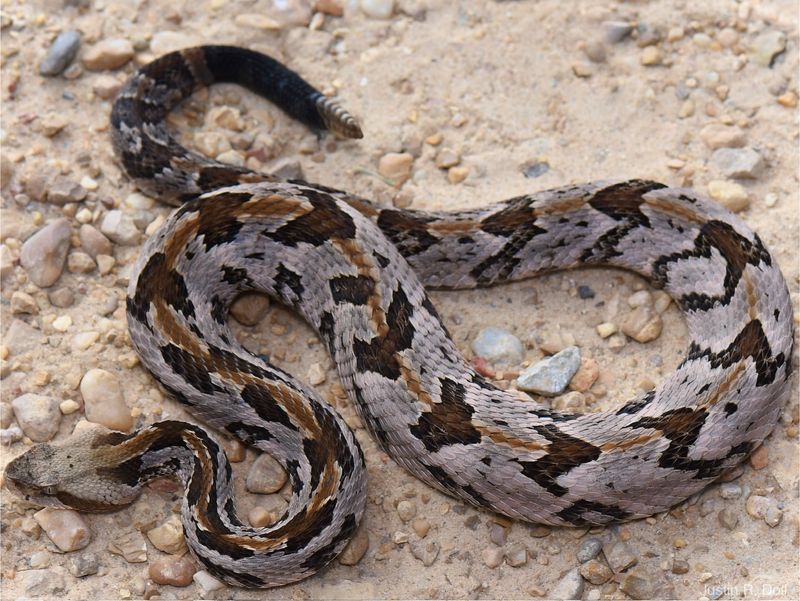
In the varied landscapes of New Jersey, the Timber Rattlesnake is an intriguing yet dangerous inhabitant. Known for its potent venom and distinctive rattle, this snake prefers wooded areas and rocky terrains.
While generally shy, Timber Rattlesnakes will defend themselves aggressively if threatened. Their bites can cause serious medical issues and require prompt attention. Caution and respect for their space are essential when exploring their habitats.
The presence of Timber Rattlesnakes in New Jersey highlights the importance of wildlife awareness and safety measures, fostering a respectful coexistence in the state’s natural settings.
31. New Mexico – Black Bears
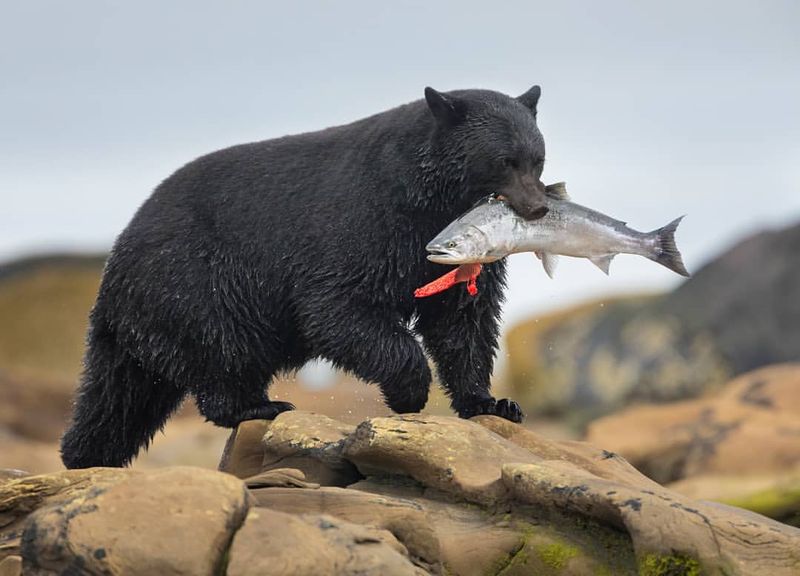
New Mexico’s diverse climates and landscapes provide a habitat for the Black Bear, a species that, while generally peaceful, commands respect and caution. These bears are adaptable, often found in forested and mountainous areas.
Black Bears are not typically aggressive but can become dangerous if they feel threatened or are in search of food near human settlements. Residents are encouraged to manage waste responsibly and use bear-proof containers to reduce interactions.
32. New York – Coyotes
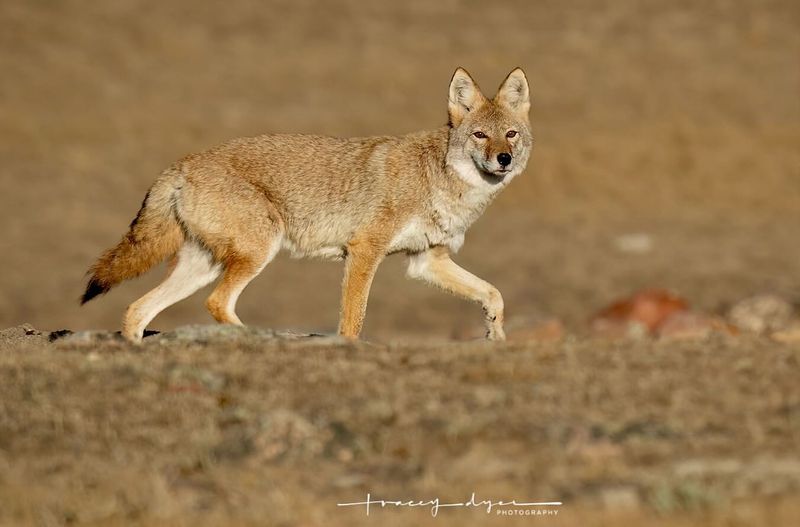
Coyotes have made their presence known in New York’s rural and suburban areas, showcasing their adaptability and cunning nature. These predators are often seen near human settlements, where they scavenge for food.
While generally not a threat to humans, Coyotes can endanger pets and small livestock. Understanding their behavior and securing food sources are essential for minimizing conflicts.
The presence of Coyotes in New York highlights the need for awareness and proactive measures to coexist with this adaptable predator in the state’s diverse environments.
33. North Carolina – Black Bears
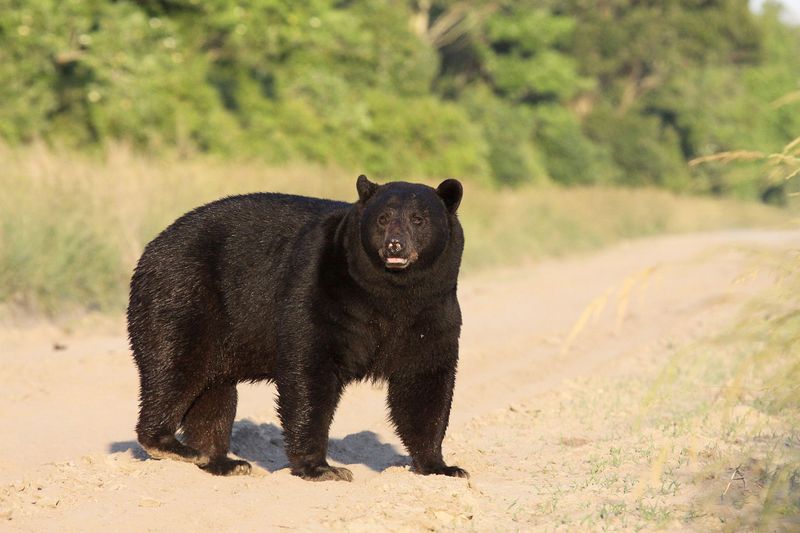
In North Carolina, the Black Bear is a well-known and respected resident, symbolizing the state’s rich natural heritage. These bears, while generally non-aggressive, can become dangerous if they feel threatened or are drawn to human settlements by food.
Black Bears are curious and opportunistic feeders, often foraging in suburban areas. Residents are encouraged to secure garbage and use bear-proof containers to minimize encounters. Understanding bear behavior and maintaining a respectful distance are crucial for safety and coexistence.
34. North Dakota – Prairie Dogs
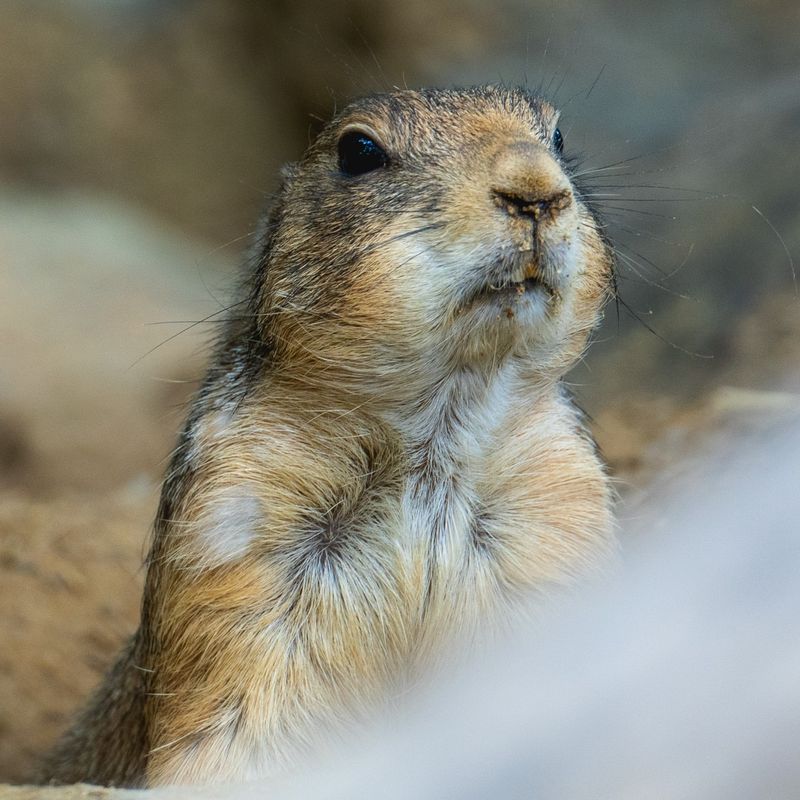
North Dakota’s vast grasslands are dotted with colonies of Prairie Dogs, small burrowing rodents that play a significant role in the ecosystem. While they are not dangerous to humans directly, their burrows can damage landscapes and pose risks to livestock.
Prairie Dogs are crucial for the prairie ecosystem, providing food for predators and aerating the soil. However, their presence can lead to conflicts with farmers and landowners due to the damage they cause.
Understanding the ecological importance of Prairie Dogs and implementing management strategies are key to balancing conservation efforts with agricultural needs in North Dakota.
35. Ohio – Coyotes
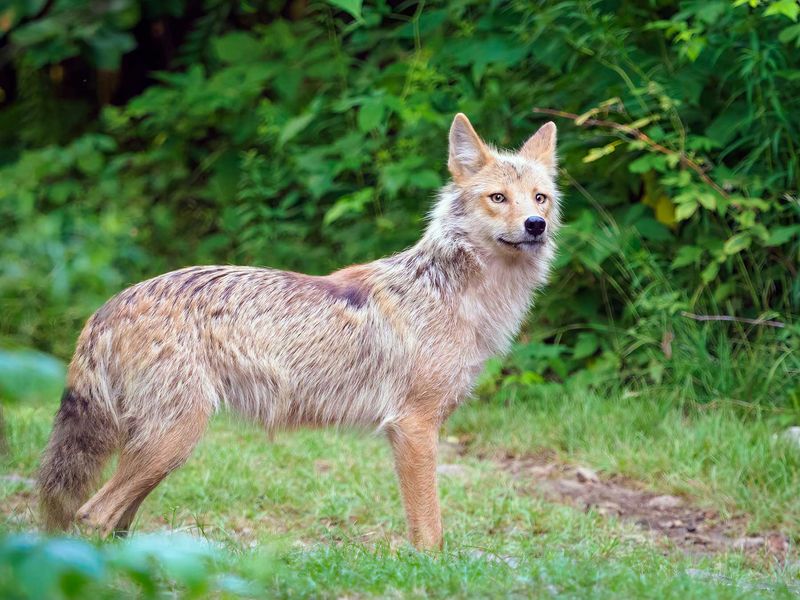
In Ohio, the adaptable Coyote has become a familiar presence, known for its intelligence and versatile nature. These animals are often found near human settlements, scavenging for food and hunting small animals.
Coyotes pose minimal direct threat to humans but can be dangerous to pets and livestock. Understanding their behavior and securing food sources are vital for minimizing conflicts.
The presence of Coyotes in Ohio underscores the need for awareness and proactive measures to coexist with this adaptable predator, ensuring a balance between human activities and wildlife preservation.
36. Oklahoma – Brown Recluse Spiders
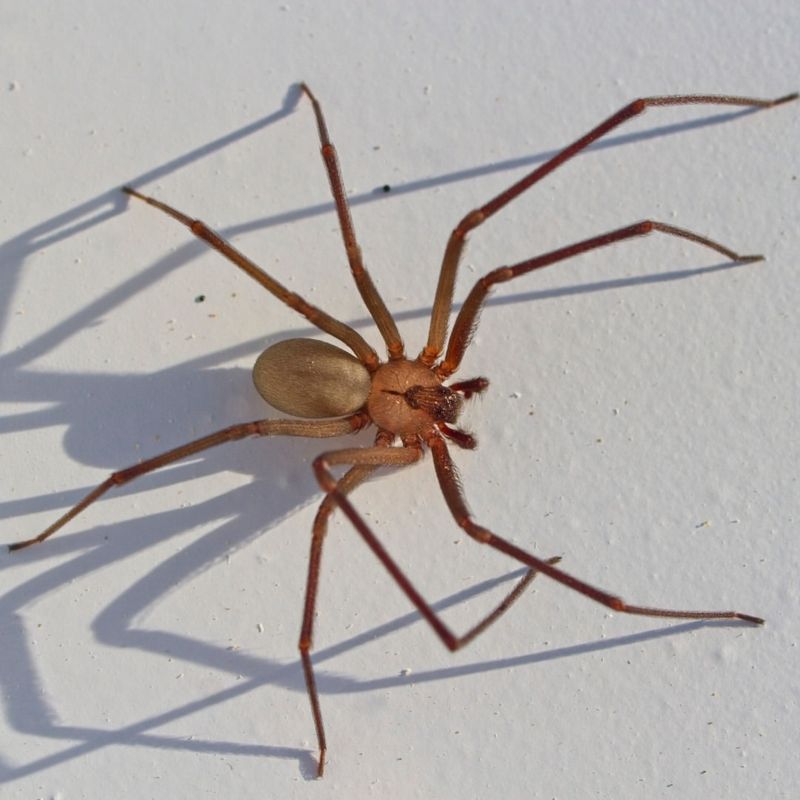
Oklahoma’s warm climate provides an ideal environment for the Brown Recluse Spider, a shy yet venomous creature. Known for its distinctive violin-shaped marking, this spider often resides in dark, undisturbed areas.
The bite of a Brown Recluse can cause serious tissue damage and medical complications if not treated promptly. Despite their reputation, these spiders are not aggressive and bite only when disturbed.
Maintaining a clean and clutter-free environment is essential to minimizing encounters. Awareness and prompt medical attention are crucial in managing risks associated with this stealthy arachnid.
37. Oregon – Cougars
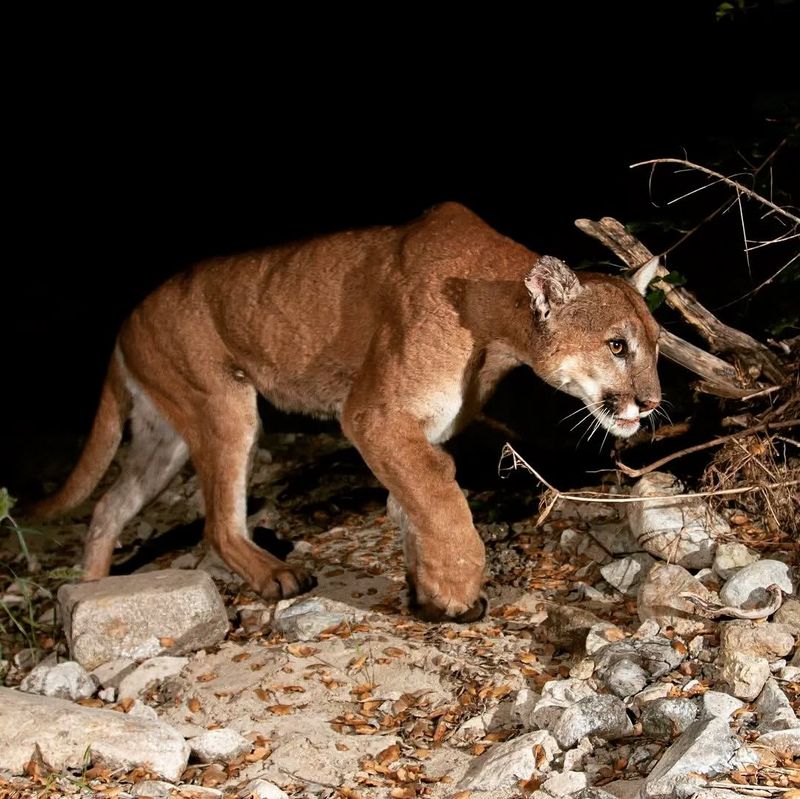
Oregon’s dense forests and rugged terrains are home to the elusive Cougar, a predator that commands both respect and caution. Known for their stealth and agility, these big cats are adept hunters, often preying on deer.
While attacks on humans are rare, encounters can occur, especially in areas where development encroaches on their habitat. Hikers and outdoor enthusiasts are advised to remain alert, travel in groups, and avoid hiking at dawn or dusk.
38. Pennsylvania – Timber Rattlesnakes
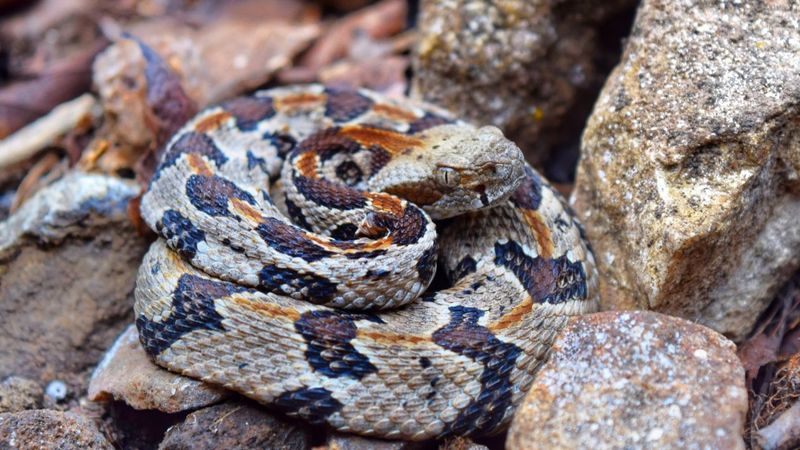
In Pennsylvania, the Timber Rattlesnake is a notable inhabitant of the state’s forests and rocky areas. Known for its potent venom and distinctive rattle, this snake commands caution and respect. Timber Rattlesnakes are generally shy, opting to retreat when threatened.
However, their bites can cause significant medical issues, requiring immediate attention. Caution is essential when exploring their habitats.
Understanding the presence of Timber Rattlesnakes in Pennsylvania highlights the importance of wildlife awareness and safety measures, fostering a respectful coexistence in natural environments.
39. Rhode Island – Northern Black Widow Spider
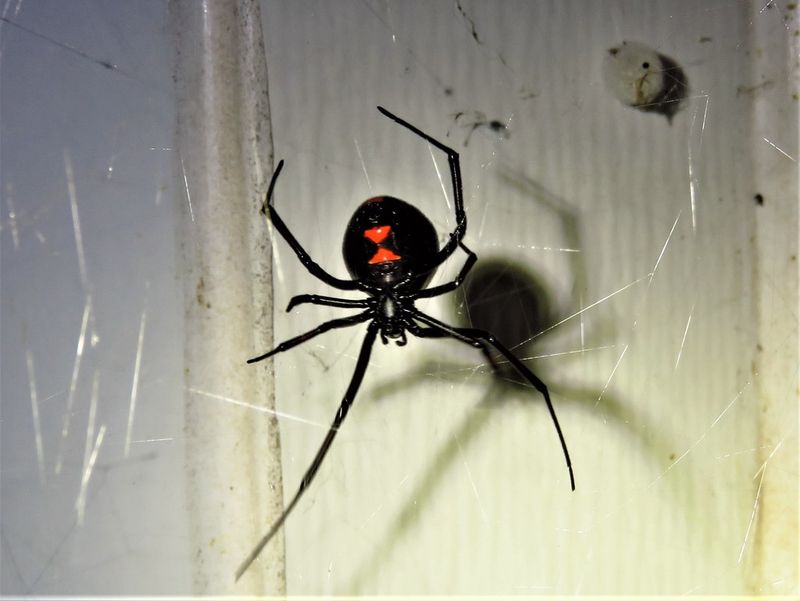
Rhode Island’s gardens and woodlands can occasionally host the Northern Black Widow Spider, a creature known for its venomous bite and distinctive red hourglass marking. This spider prefers secluded, dark areas where it can spin its webs.
While the bite of a Black Widow can cause severe symptoms, it is rarely fatal with prompt medical treatment. These spiders are not aggressive and typically bite only when provoked. Awareness and caution are vital in reducing risks of encounters.
The presence of Northern Black Widow Spiders in Rhode Island underscores the need for understanding and respecting wildlife in domestic and natural settings.
40. South Carolina – Eastern Diamondback Rattlesnake
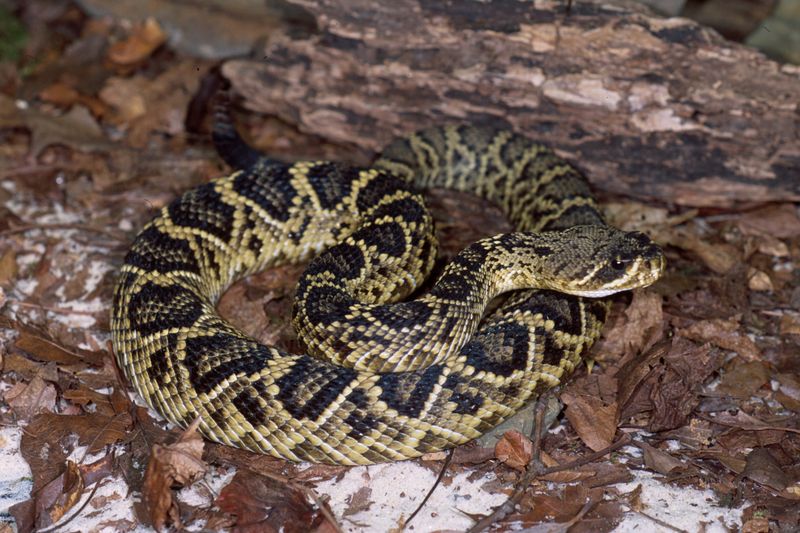
South Carolina’s diverse landscapes provide a home for the Eastern Diamondback Rattlesnake, a species known for its distinctive diamond pattern and potent venom. These snakes inhabit forests, swamps, and coastal areas, where they blend into the environment.
Eastern Diamondbacks are generally non-aggressive, choosing to remain still and rely on camouflage when threatened. However, their bites can be dangerous and require immediate medical attention. Caution and respect for their space are essential when venturing into their habitats.
41. South Dakota – American Bison
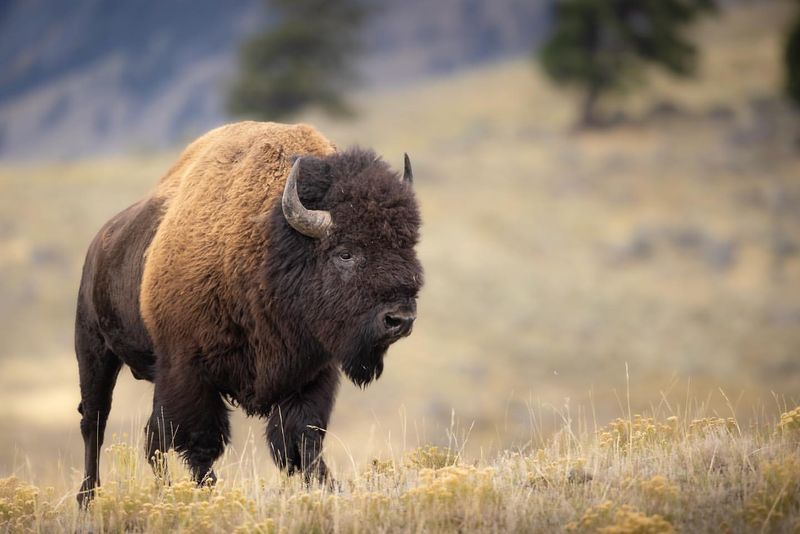
South Dakota’s expansive grasslands are home to the iconic American Bison, a symbol of the Great Plains and a species known for its formidable size and strength. While generally peaceful, bison can become aggressive if provoked or if they feel threatened.
Encounters with bison often occur in national parks and grasslands where they roam freely. Visitors are advised to keep a safe distance and avoid actions that might startle them. Their massive size makes any confrontation potentially dangerous.
The presence of American Bison in South Dakota is a testament to the region’s rich natural heritage, emphasizing the need for respectful coexistence and understanding of these majestic creatures.
42. Tennessee – Copperhead Snakes
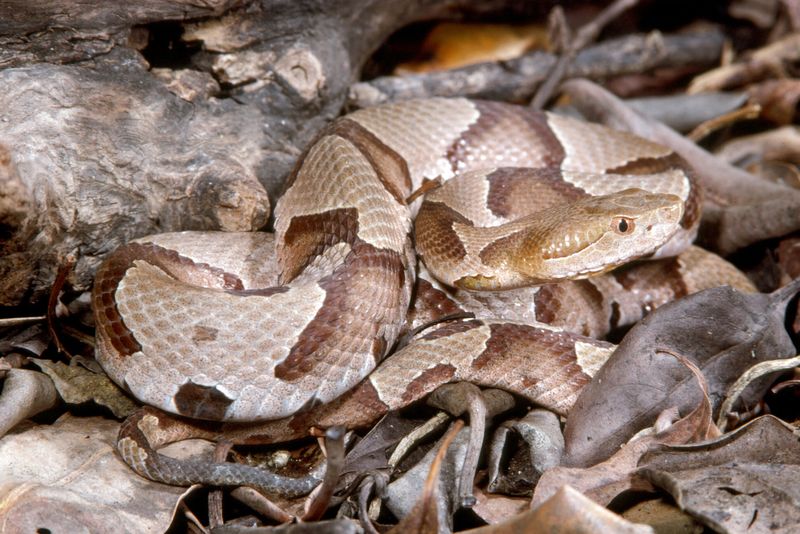
Tennessee’s forests and rural areas are home to the Copperhead Snake, a species known for its distinctive coloring and potent venom. These snakes prefer wooded areas and are masters of camouflage, often going unnoticed by passers-by.
Copperhead bites, while rarely fatal, can cause significant pain and medical complications, making prompt treatment essential. Caution is advised when exploring areas where these snakes reside, particularly during warmer months.
The presence of Copperhead Snakes in Tennessee highlights the importance of wildlife awareness and safety, fostering a respectful coexistence with these elusive creatures.
43. Texas – Western Diamondback Rattlesnake
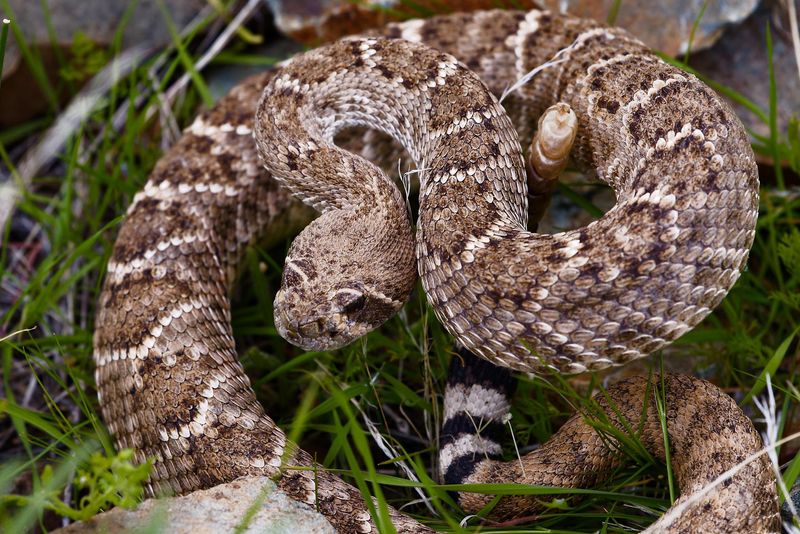
In the diverse landscapes of Texas, the Western Diamondback Rattlesnake is a formidable presence, known for its distinctive diamond pattern and potent venom. These snakes inhabit deserts, grasslands, and rocky areas, often seen basking in the sun.
While generally non-aggressive, Western Diamondbacks will defend themselves if threatened, and their bites require immediate medical attention. Awareness and caution are essential when exploring their habitats.
44. Utah – Cougars
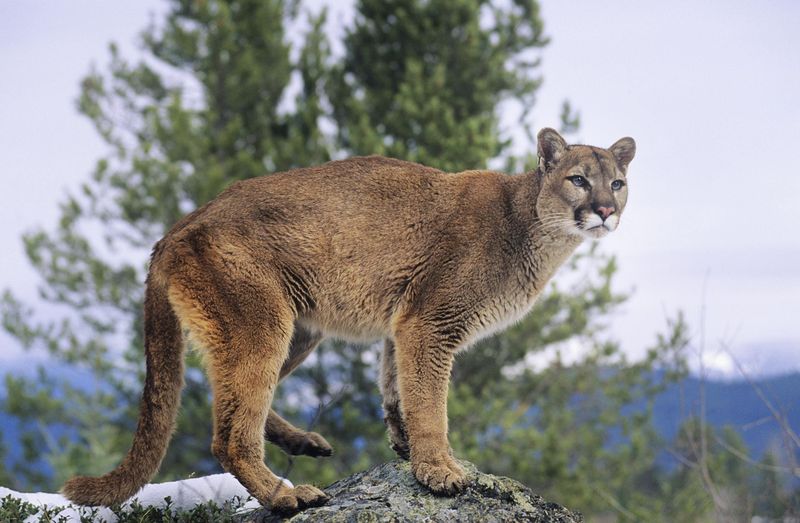
Utah’s rugged cliffs and canyons are home to the elusive Cougar, a predator that commands respect and caution. Known for their stealth and power, these big cats are skilled hunters, often preying on deer and other wildlife.
While attacks on humans are rare, encounters can occur, especially in areas where human development encroaches on their habitat. Hikers and outdoor enthusiasts must remain alert, travel in groups, and avoid hiking at dawn or dusk.
The presence of Cougars in Utah highlights the importance of wildlife awareness and understanding, ensuring safe coexistence with these majestic creatures.
45. Vermont – Moose
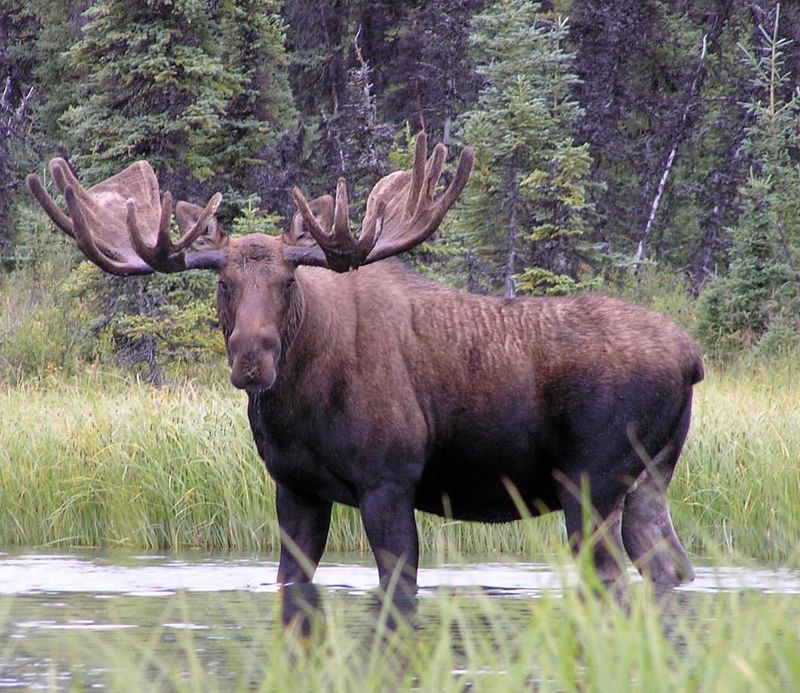
Vermont’s verdant landscapes are home to the majestic Moose, the largest member of the deer family, known for its imposing size and impressive antlers. While generally not aggressive, moose can become dangerous if provoked or during mating season when their behavior is unpredictable.
Encounters often occur on roads, especially during dawn and dusk when moose are most active. Drivers are advised to be vigilant and reduce speed in areas known for moose crossings to avoid collisions.
46. Virginia – Black Bears
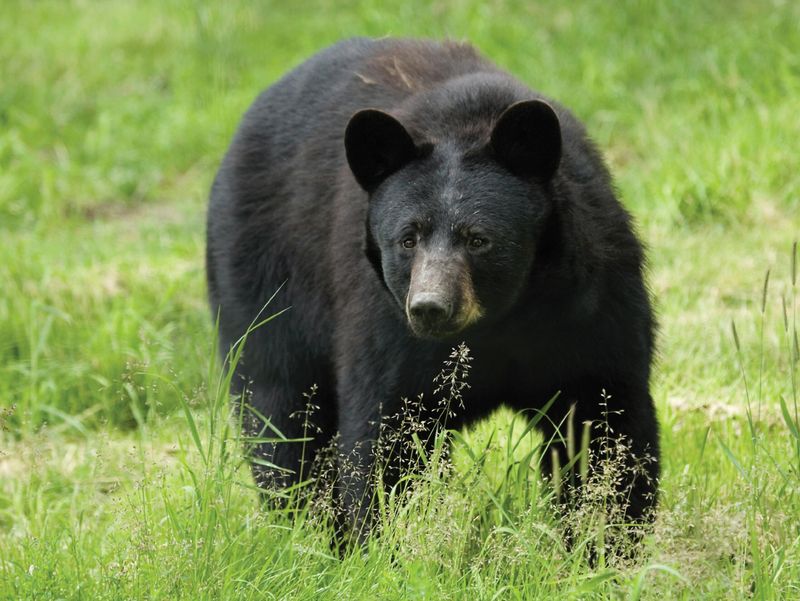
Virginia’s forests and mountainous regions are frequented by the Black Bear, a species known for its intelligence and adaptability. These bears are generally solitary, roaming large territories in search of food.
While not typically aggressive, Black Bears can pose dangers if they feel threatened or if drawn to human settlements by food. Securing trash and using bear-proof containers can help reduce interactions.
The presence of Black Bears in Virginia underscores the importance of respectful coexistence and understanding wildlife behavior, ensuring safety and harmony in natural environments.
47. Washington – Orcas
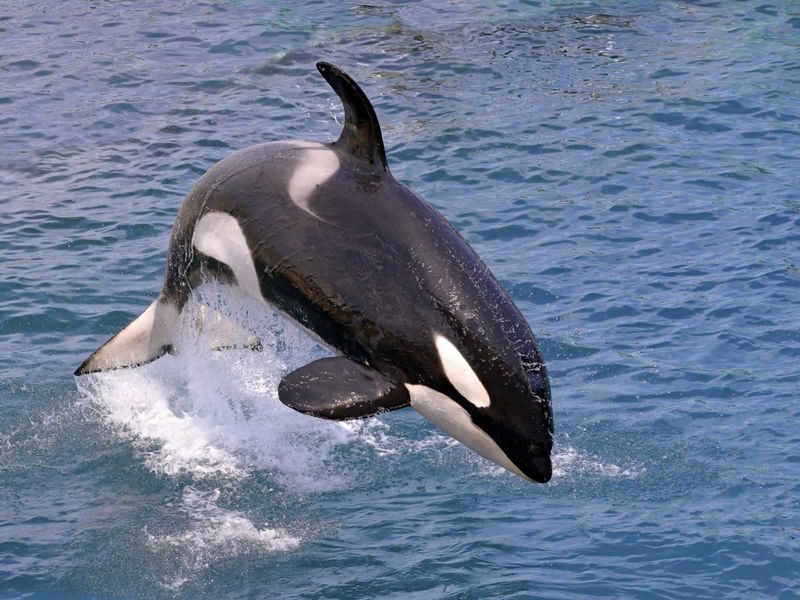
Washington’s coastal waters are home to the majestic Orca, or Killer Whale, a top predator known for its intelligence and complex social structures. Orcas roam the Puget Sound, captivating onlookers with their striking appearance and graceful movements.
While generally not a threat to humans, Orcas play a crucial role in the marine ecosystem, preying on fish and other marine life. Their presence is a reminder of the delicate balance within ocean habitats.
The Orca’s majesty and role in the ecosystem highlight the importance of marine conservation efforts in Washington, ensuring the preservation of these magnificent creatures and their environment.
48. West Virginia – Timber Rattlesnakes
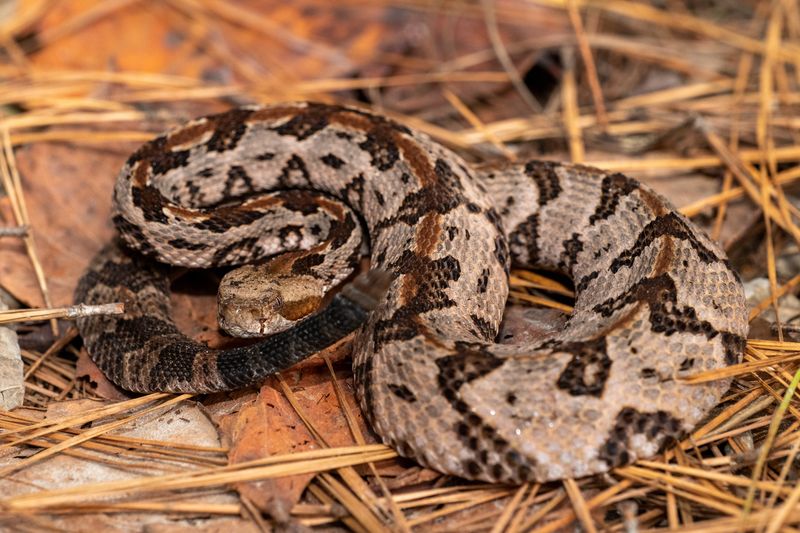
West Virginia’s forests and mountainous regions are home to the Timber Rattlesnake, a species known for its potent venom and distinctive rattle. These snakes prefer remote, wooded areas where they can remain undisturbed.
While generally shy, Timber Rattlesnakes will defend themselves aggressively if threatened, and their bites can cause significant medical issues requiring prompt attention.
Understanding the presence of Timber Rattlesnakes in West Virginia highlights the importance of wildlife awareness and safety measures, fostering a respectful coexistence in the state’s natural settings.
49. Wisconsin – Timber Wolves
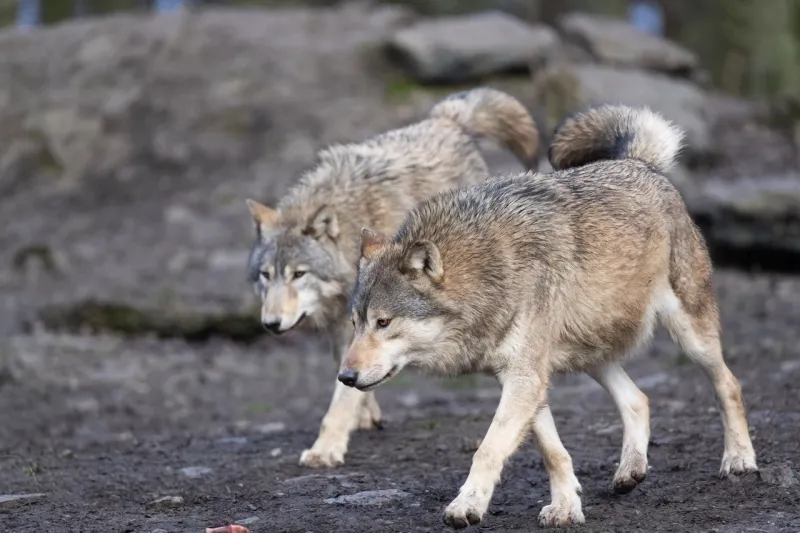
Wisconsin’s forests and snowy landscapes are the domain of the Timber Wolves, a species known for their intelligence and social structure. Wolves play a crucial role in maintaining the ecological balance by controlling prey populations.
While generally avoiding humans, wolves can pose a threat to livestock, leading to conflicts with local farmers. Understanding their behavior and implementing preventive measures are essential for coexistence.
50. Wyoming – Grizzly Bears
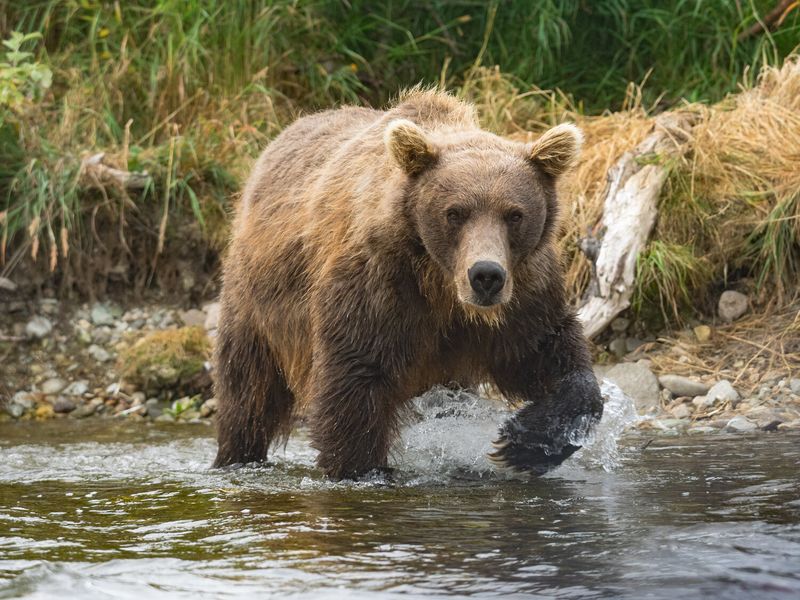
Wyoming’s expansive wilderness is home to the imposing Grizzly Bear, a symbol of the American West and a species known for its strength and resilience. These bears are apex predators, inhabiting the forests and mountains of the region.
Grizzlies can be particularly aggressive if surprised or if their cubs are threatened. Visitors to Wyoming’s wilderness areas should exercise caution, making noise to avoid startling bears and storing food securely. Their role in the ecosystem is vital, and understanding their behavior is crucial for safety and conservation.

